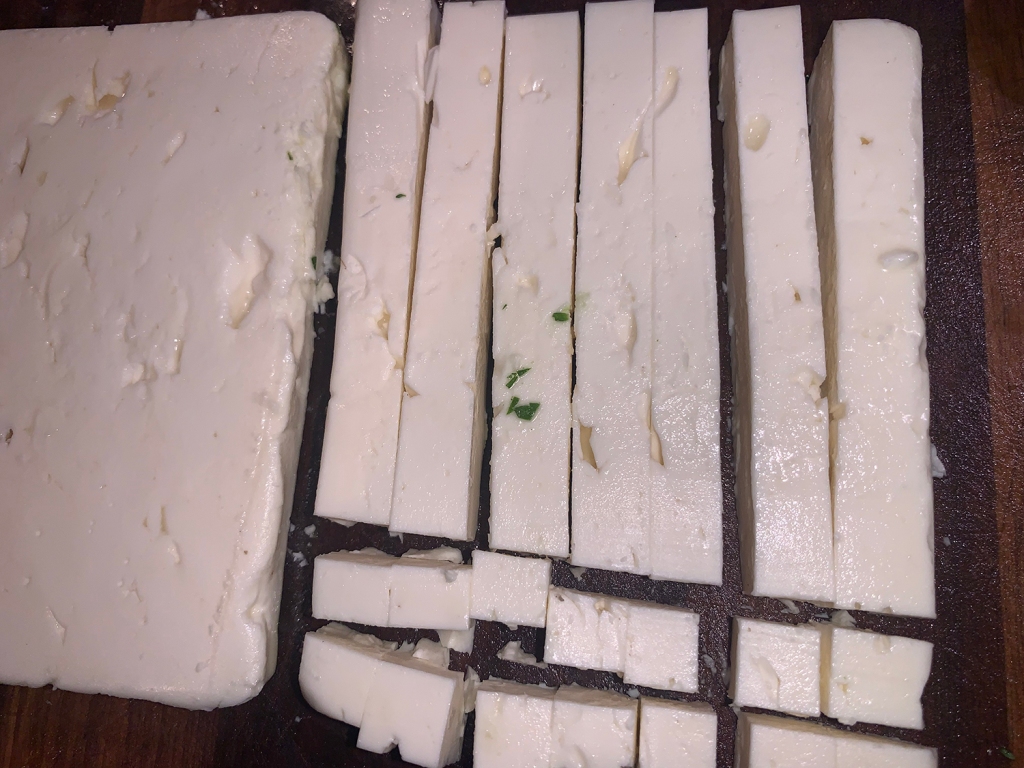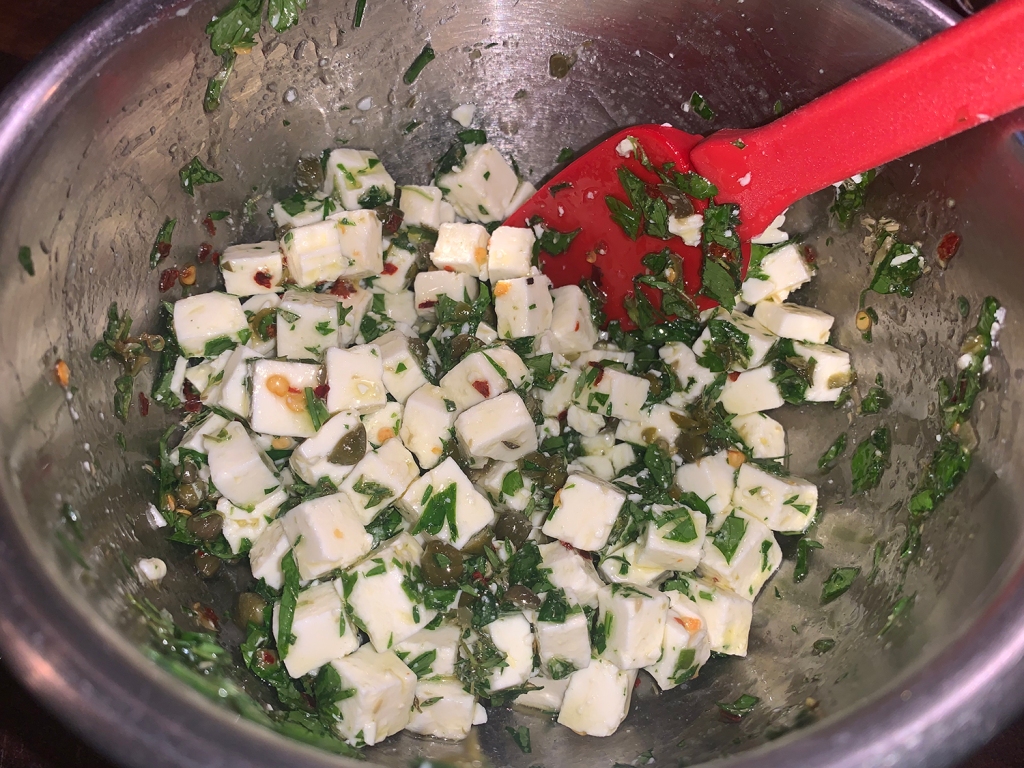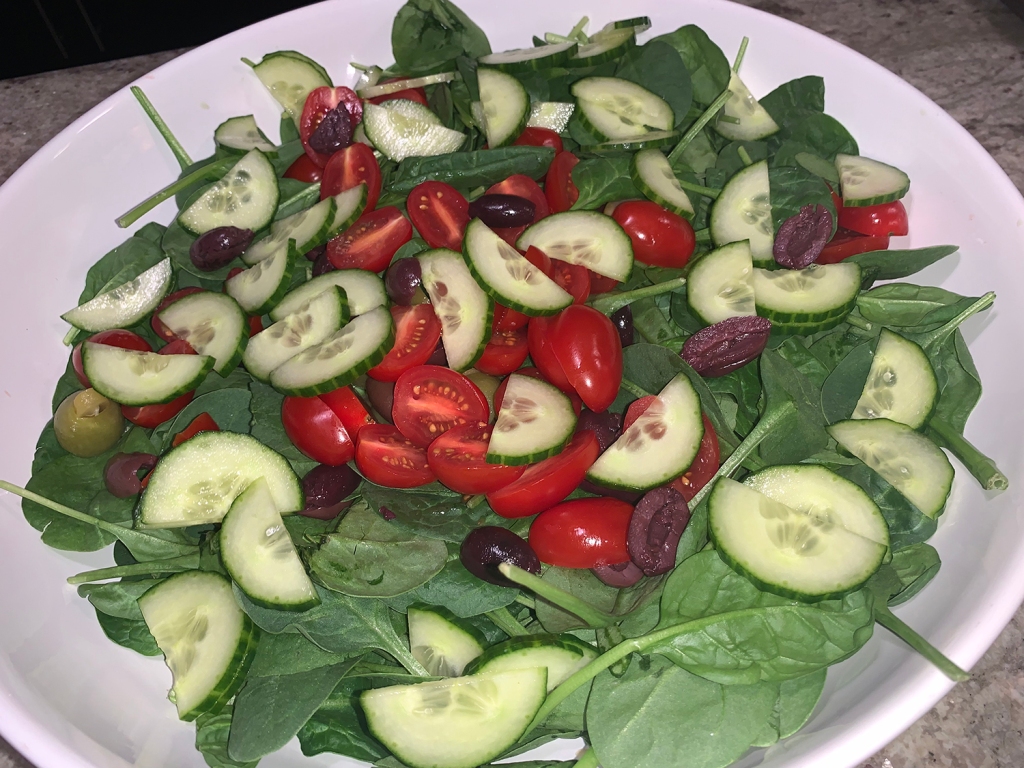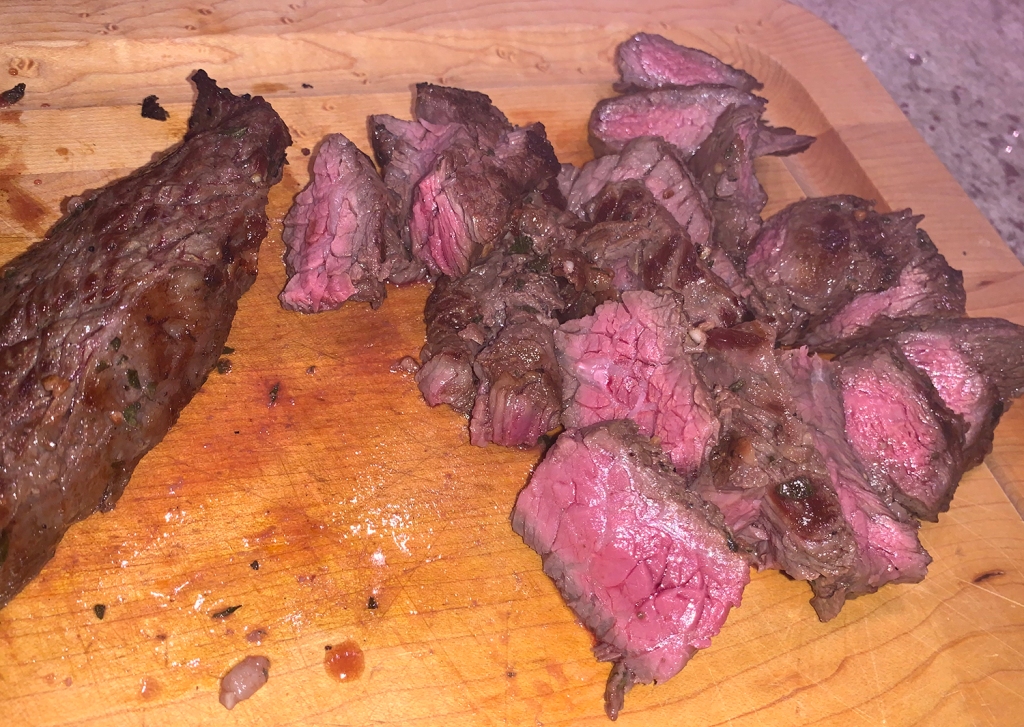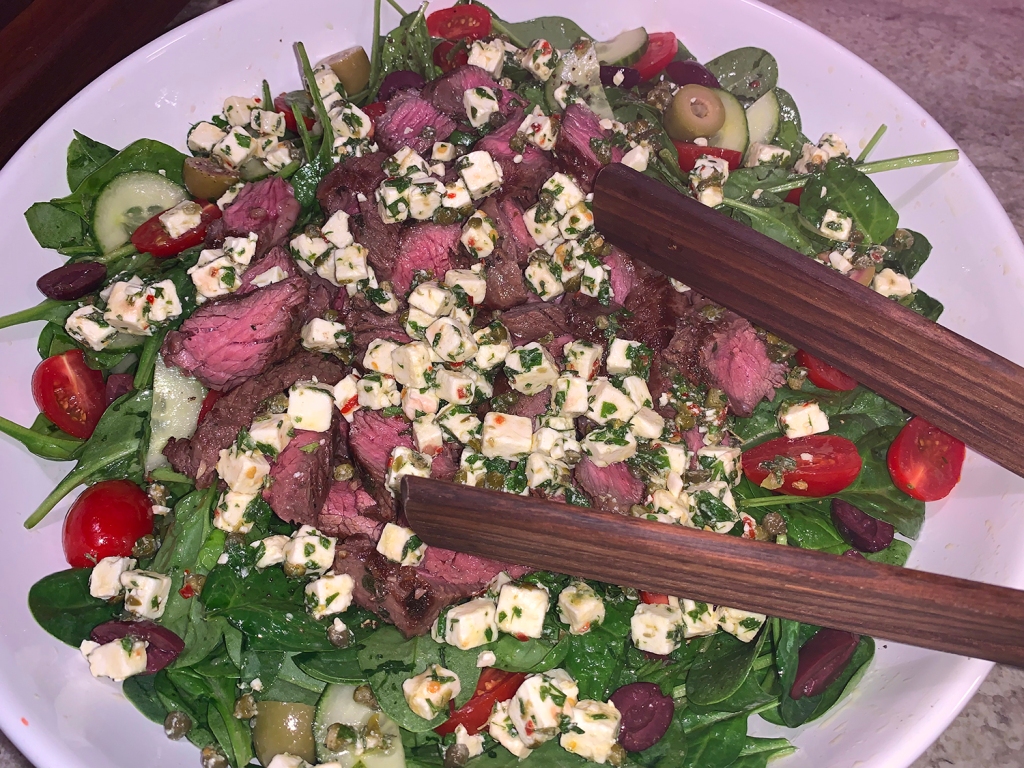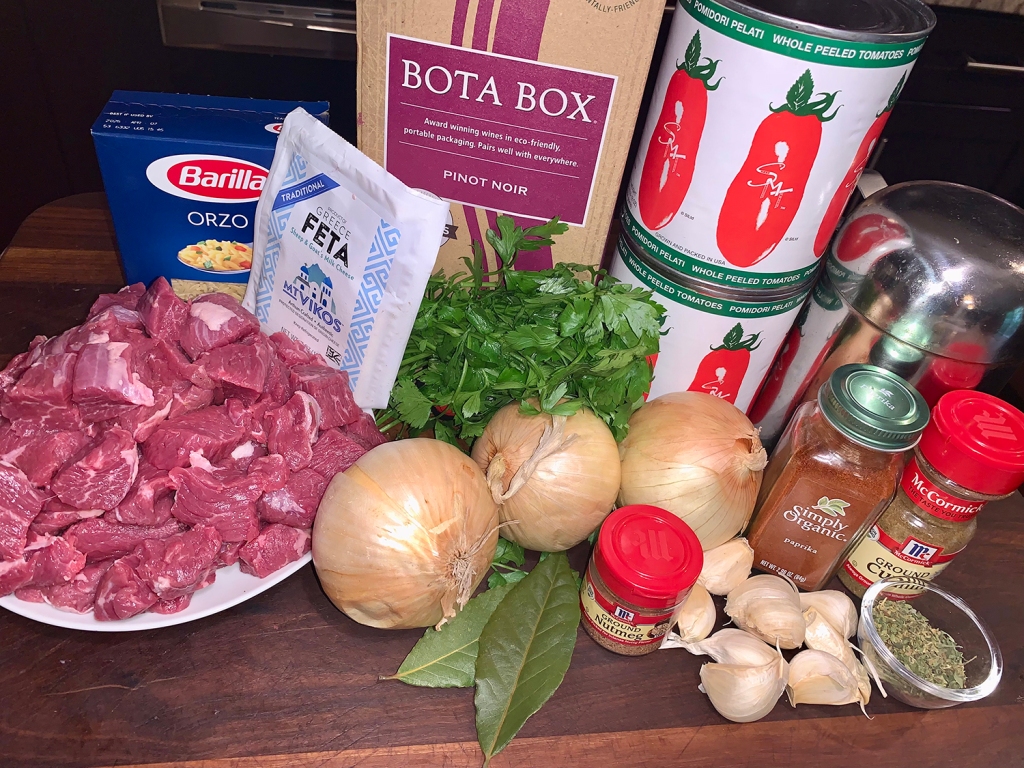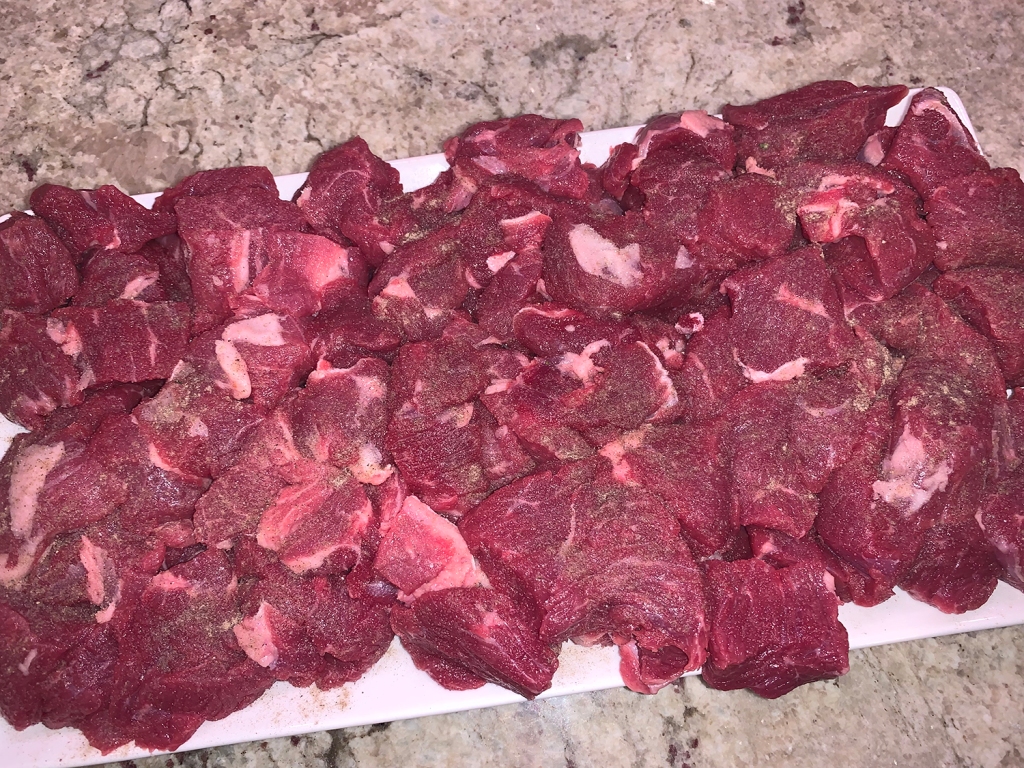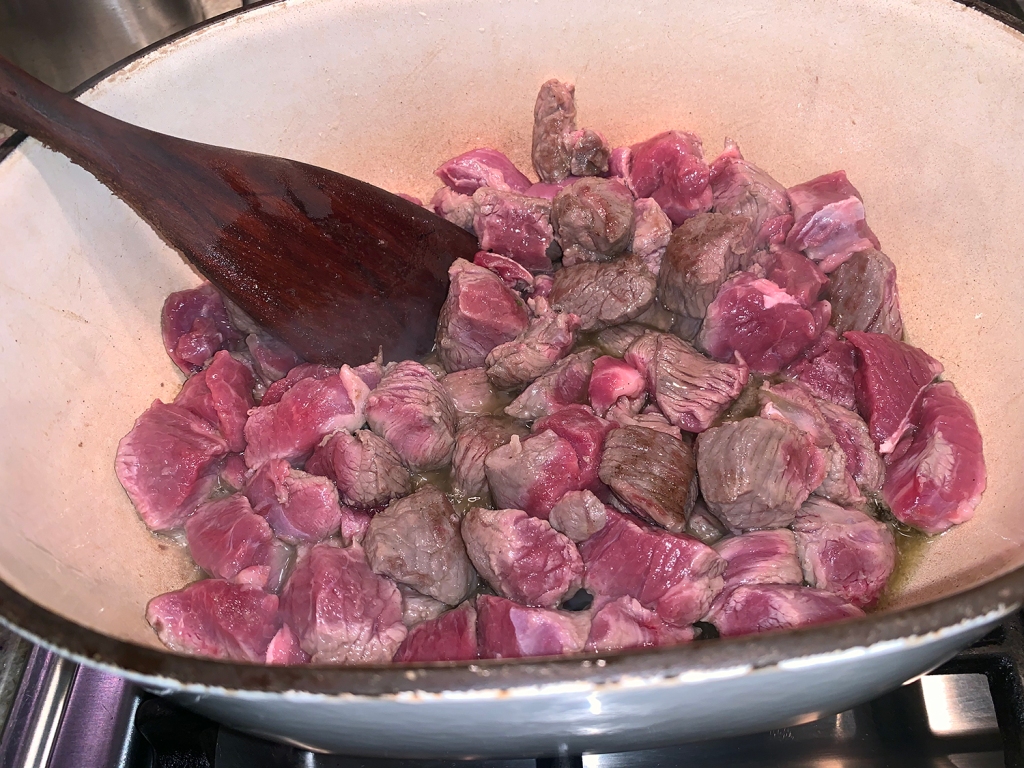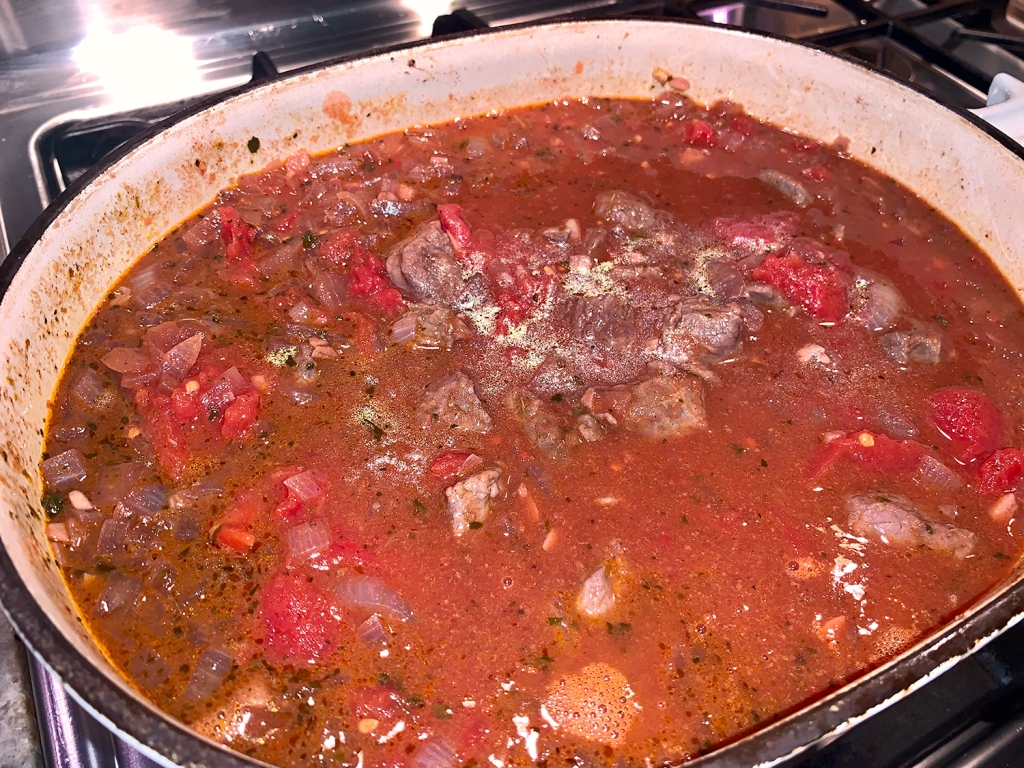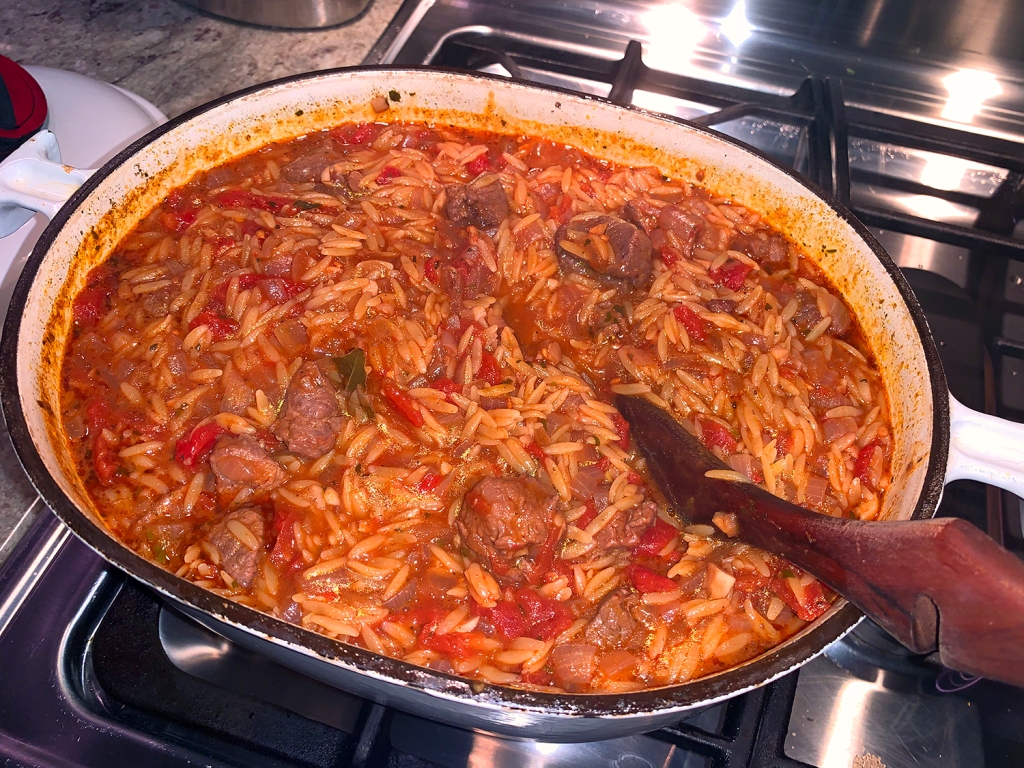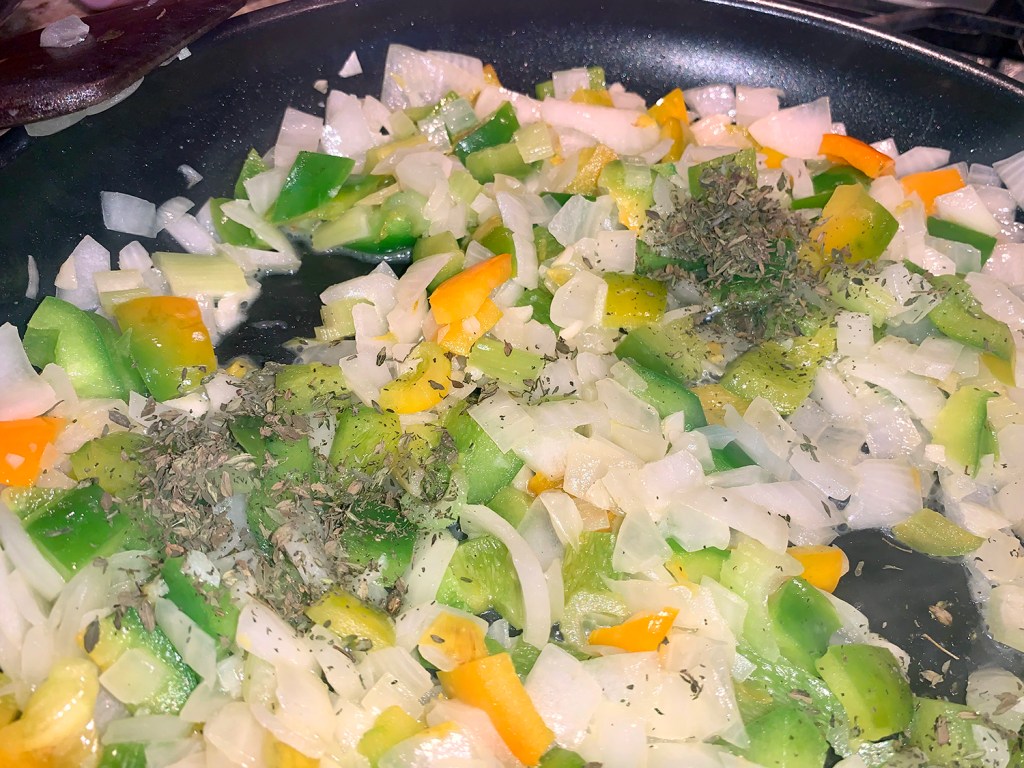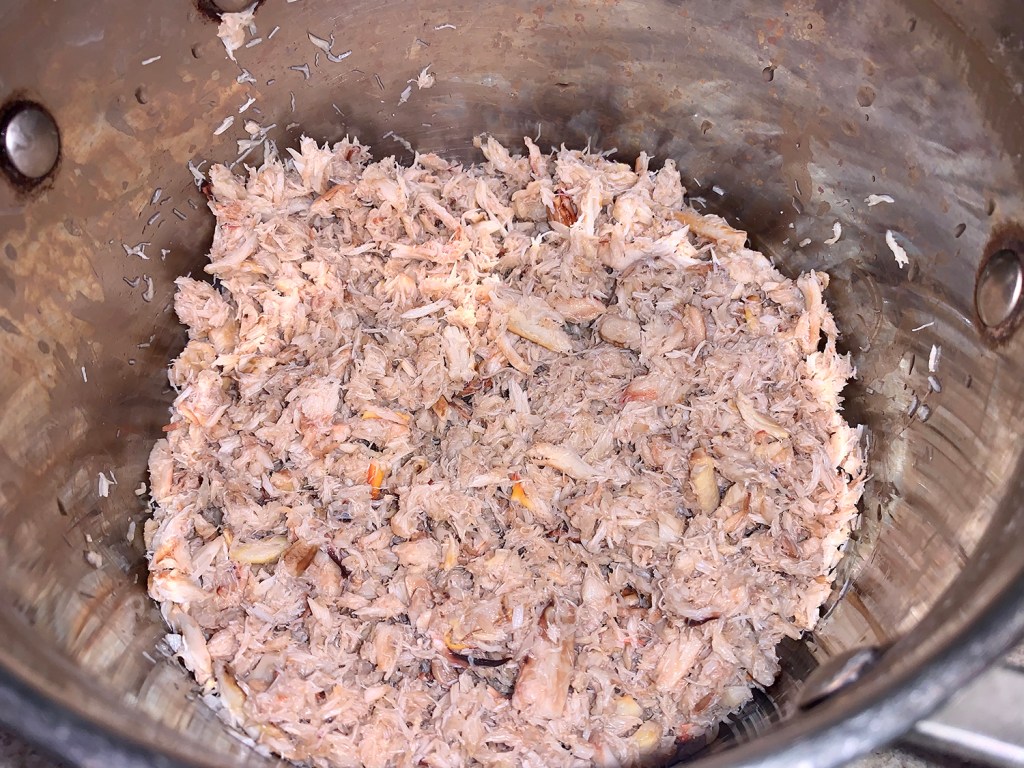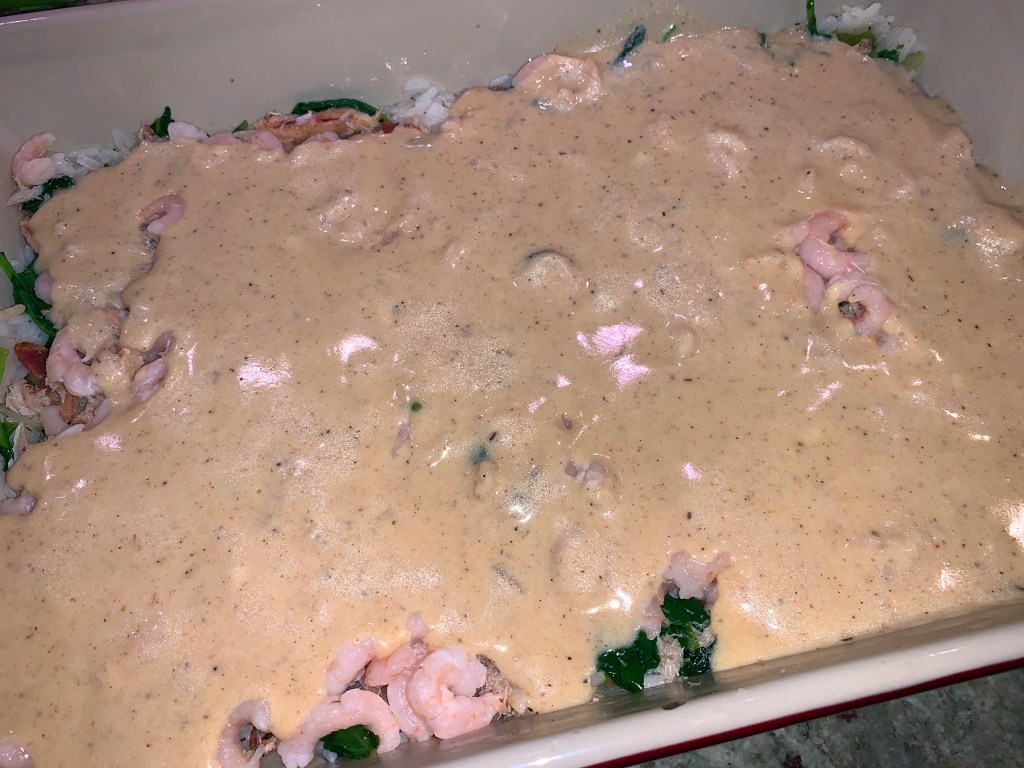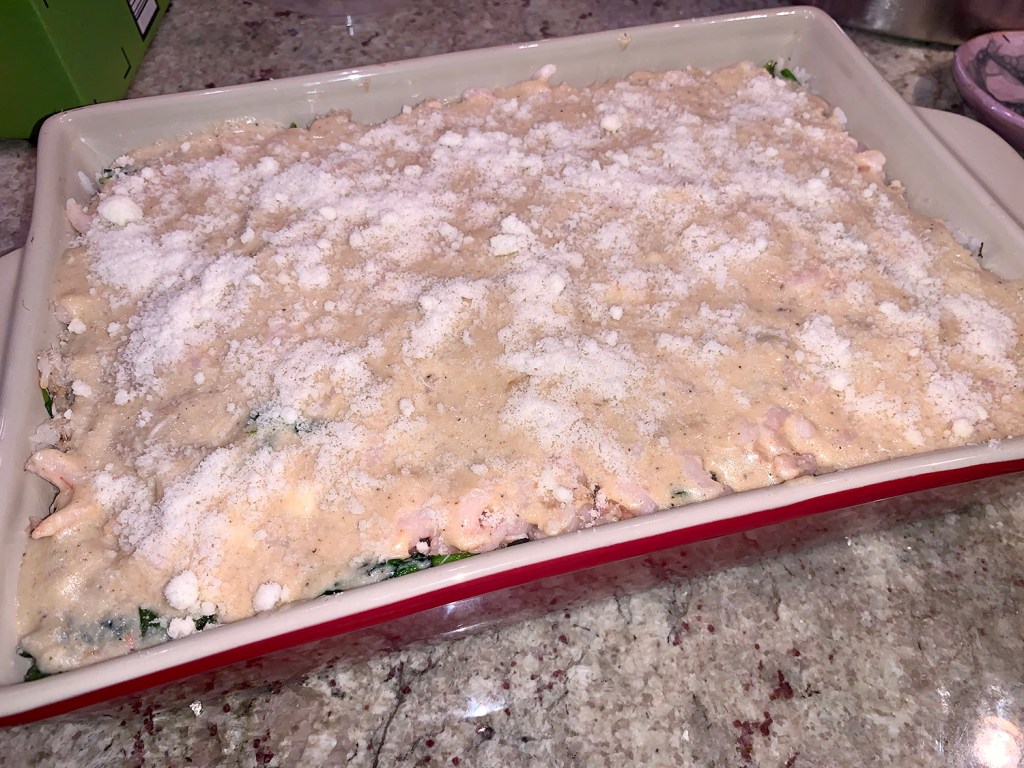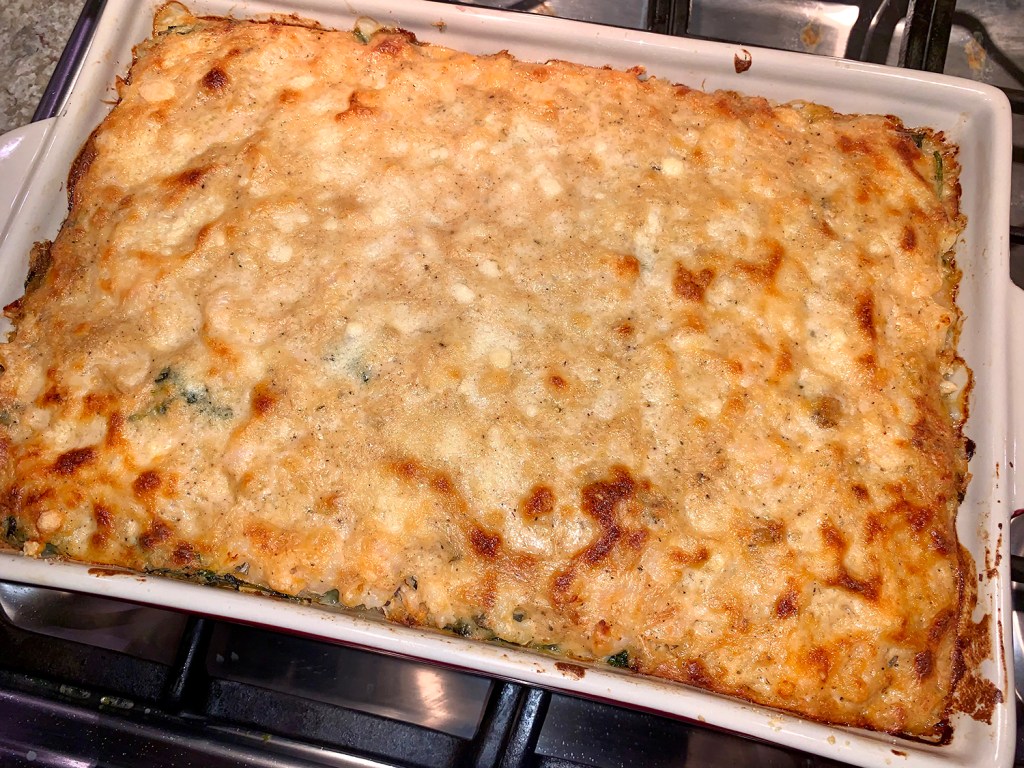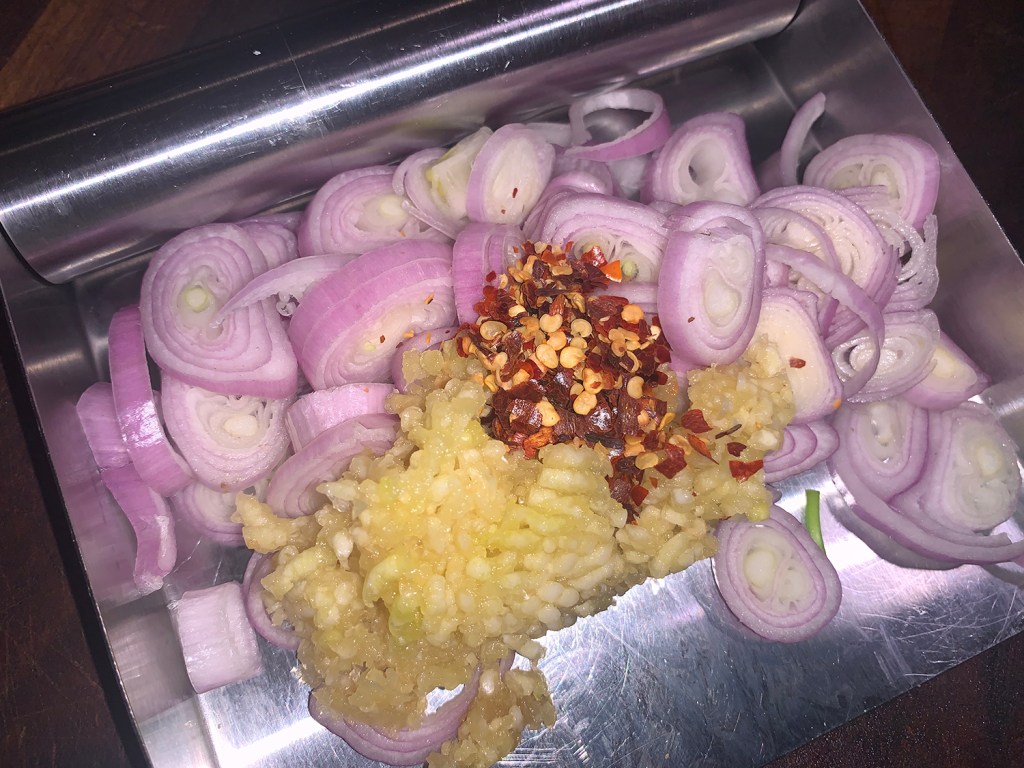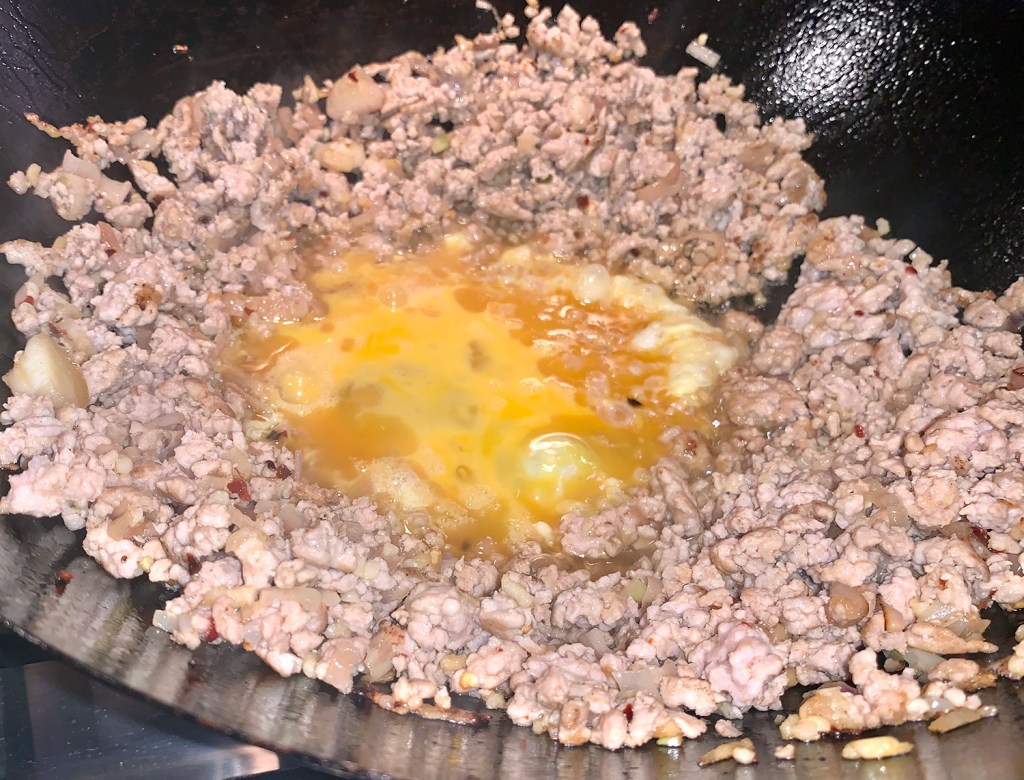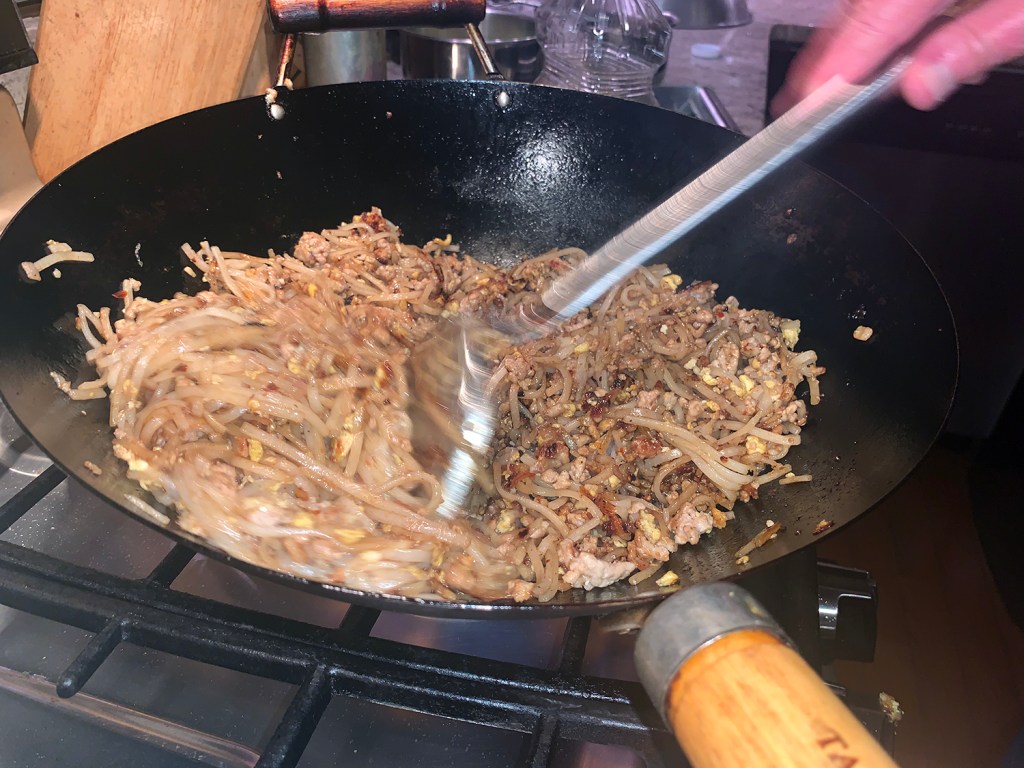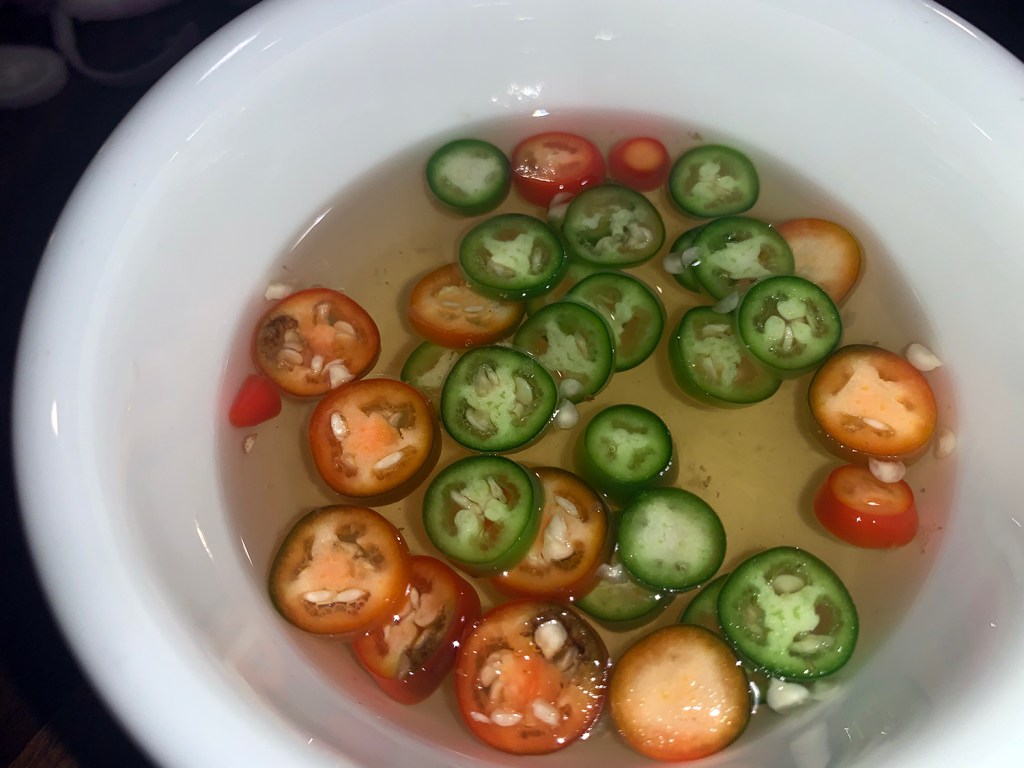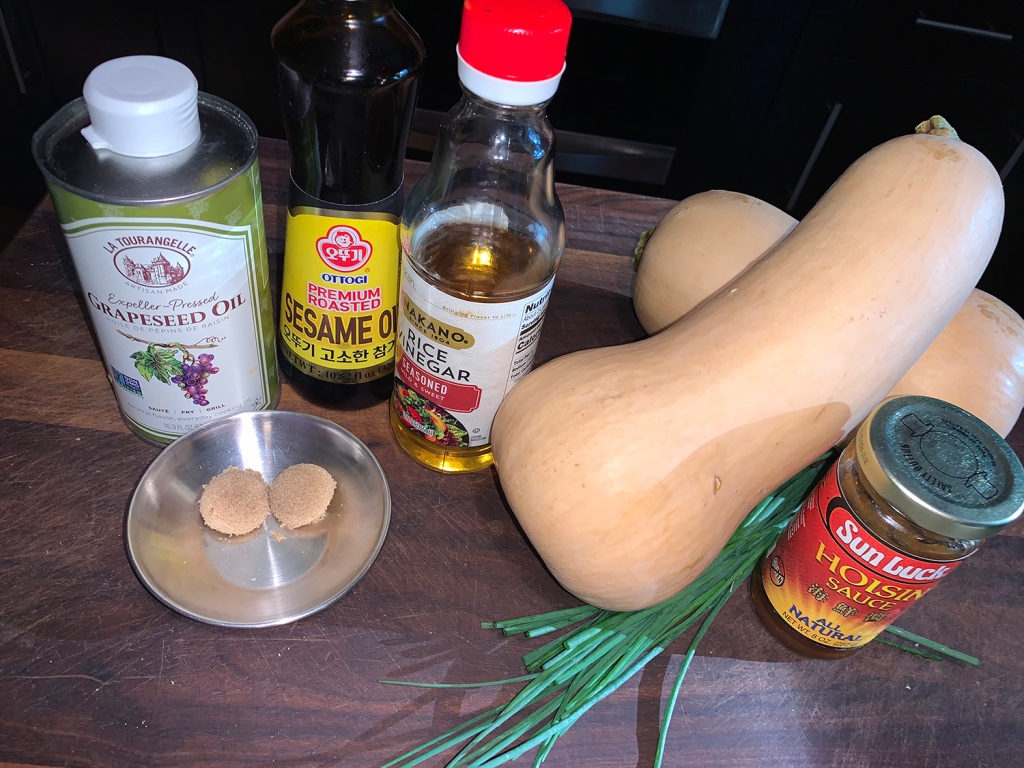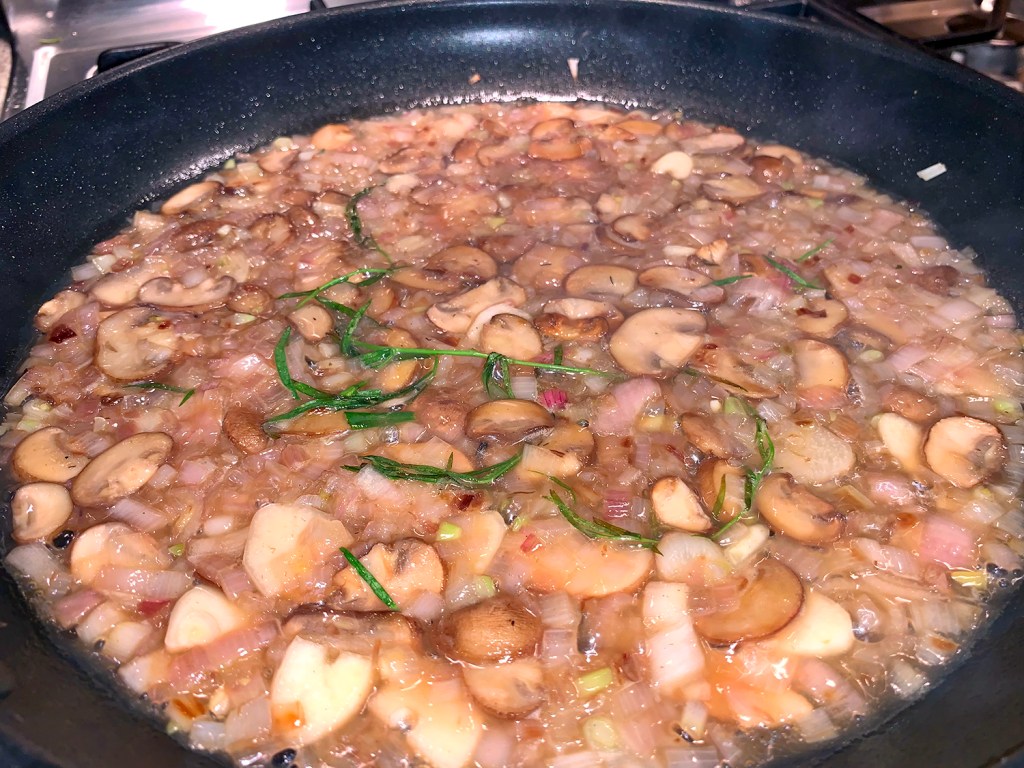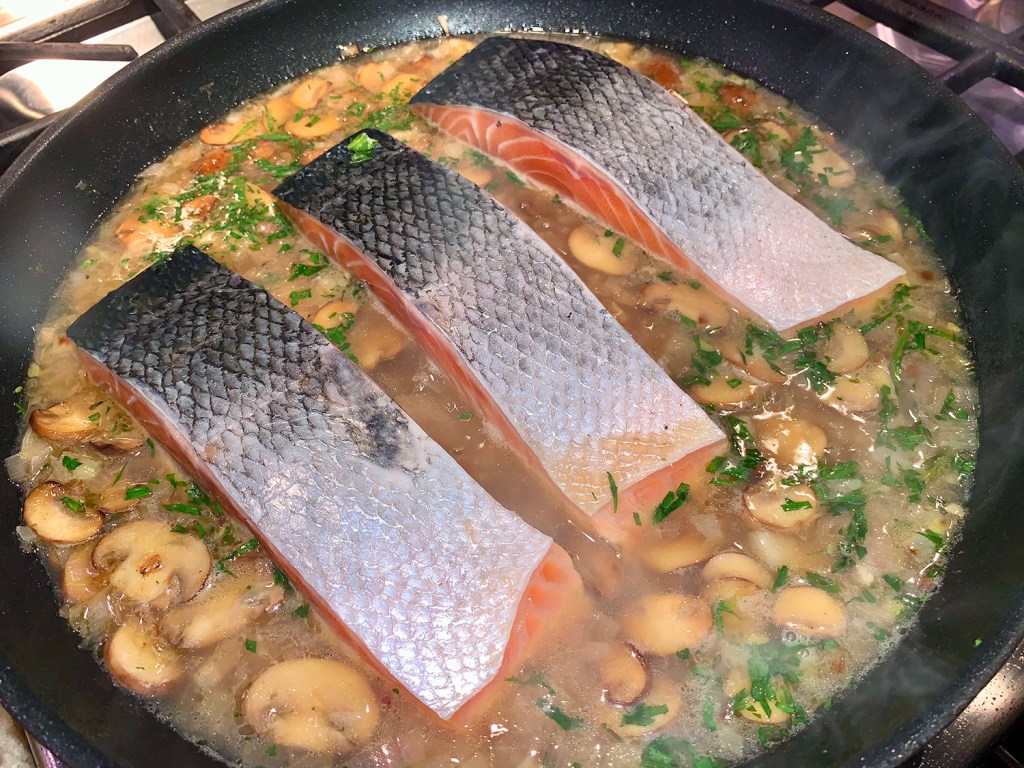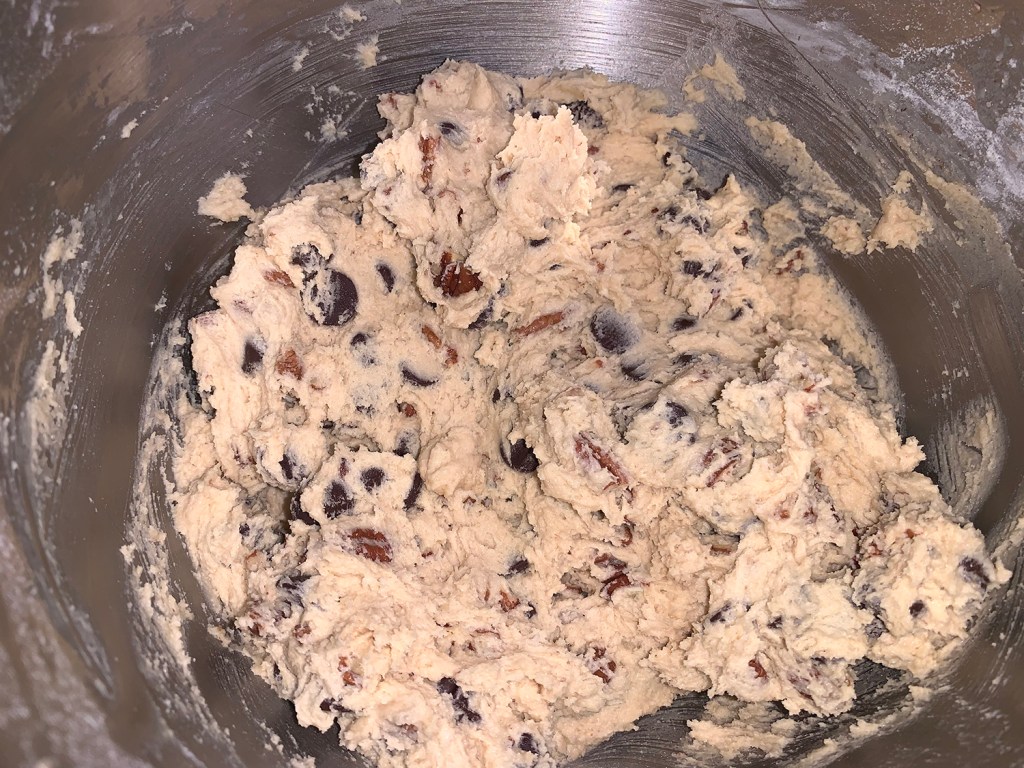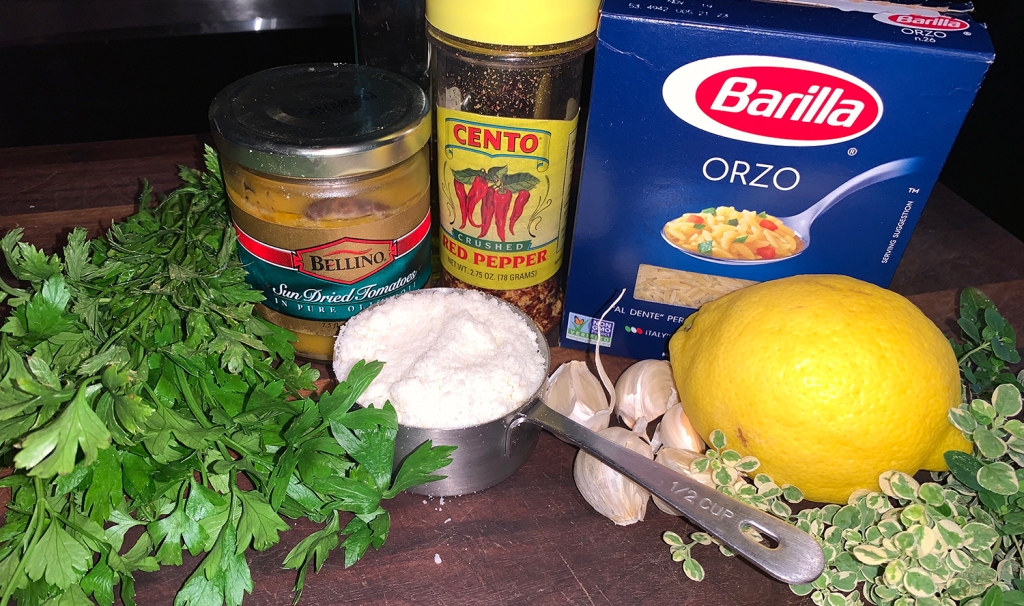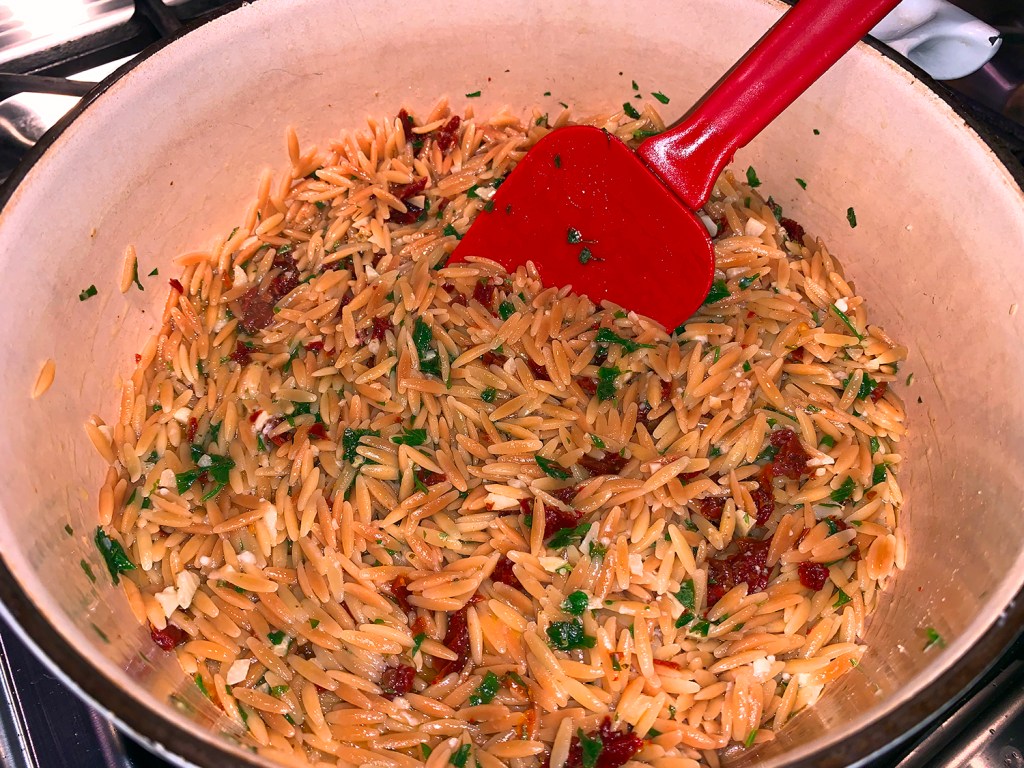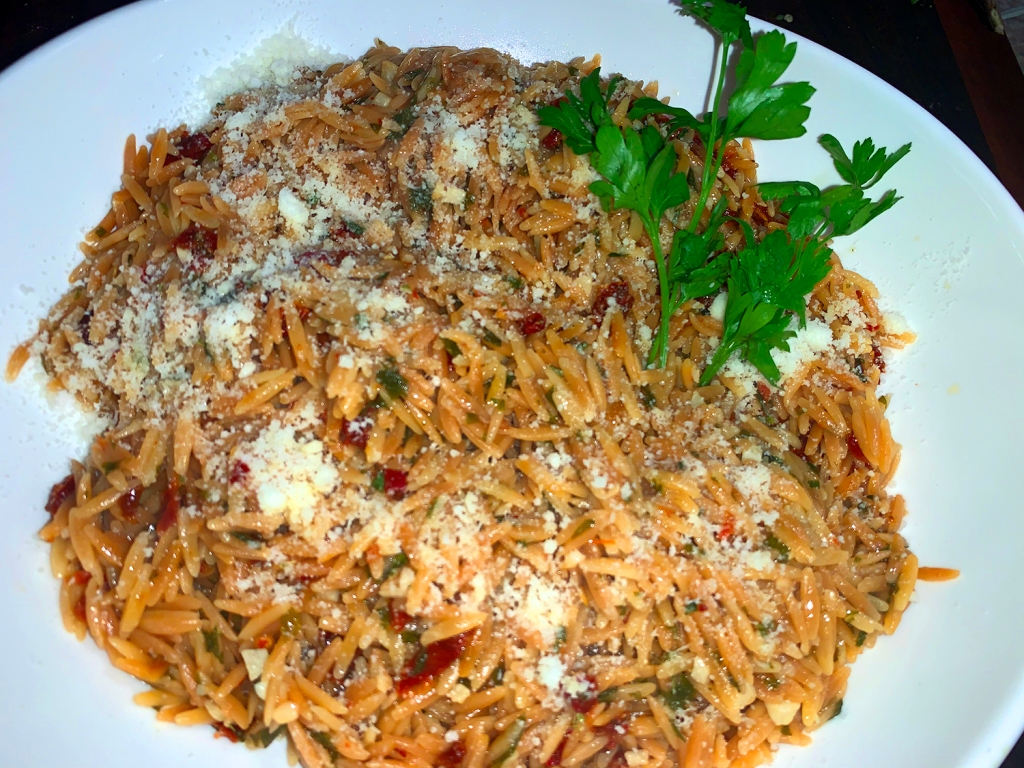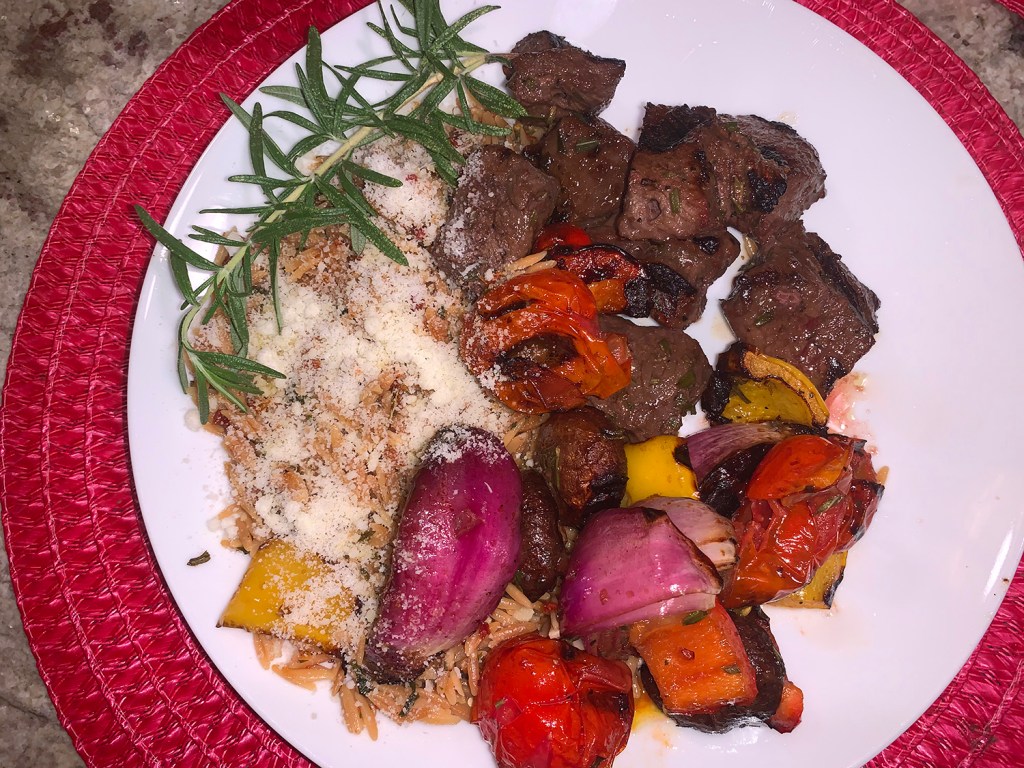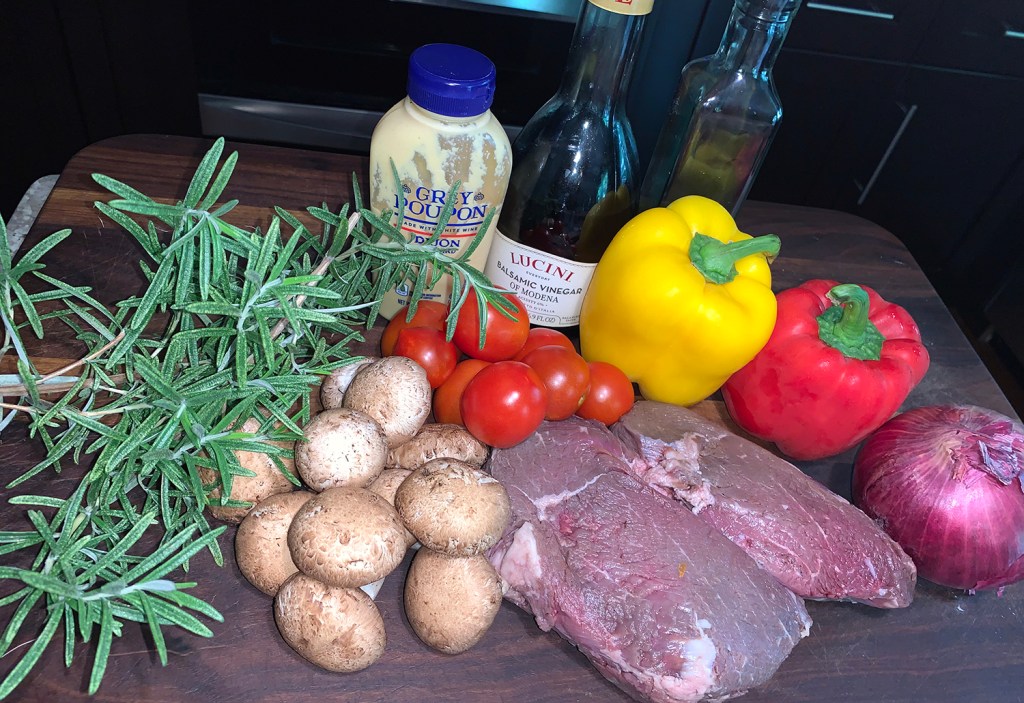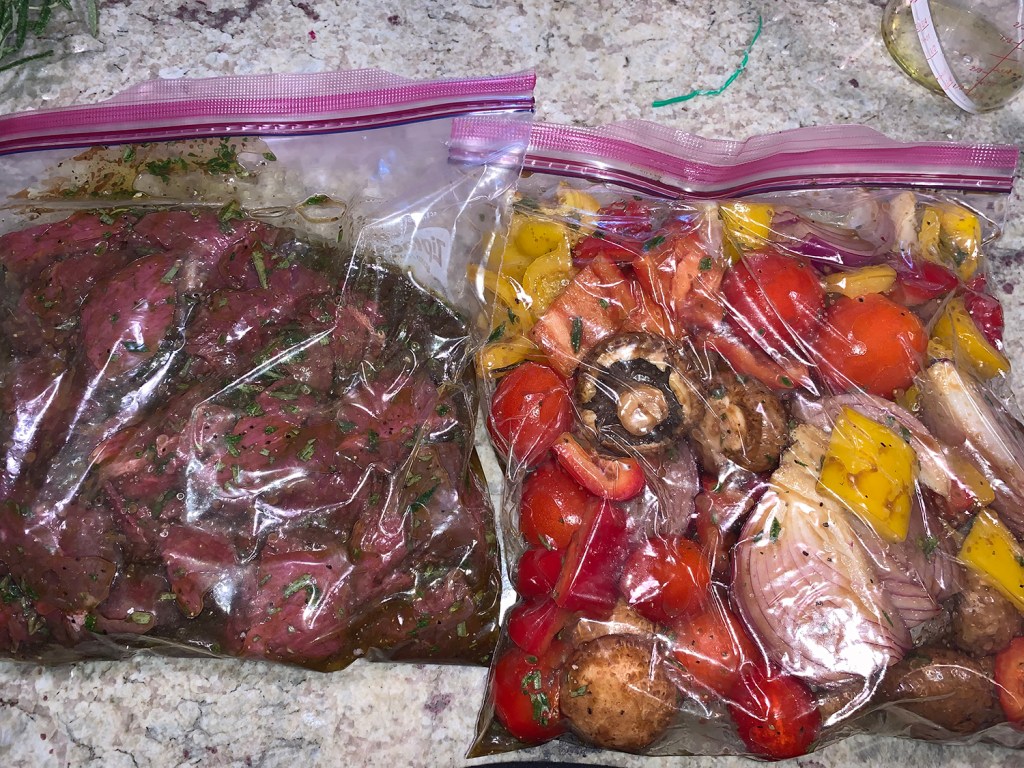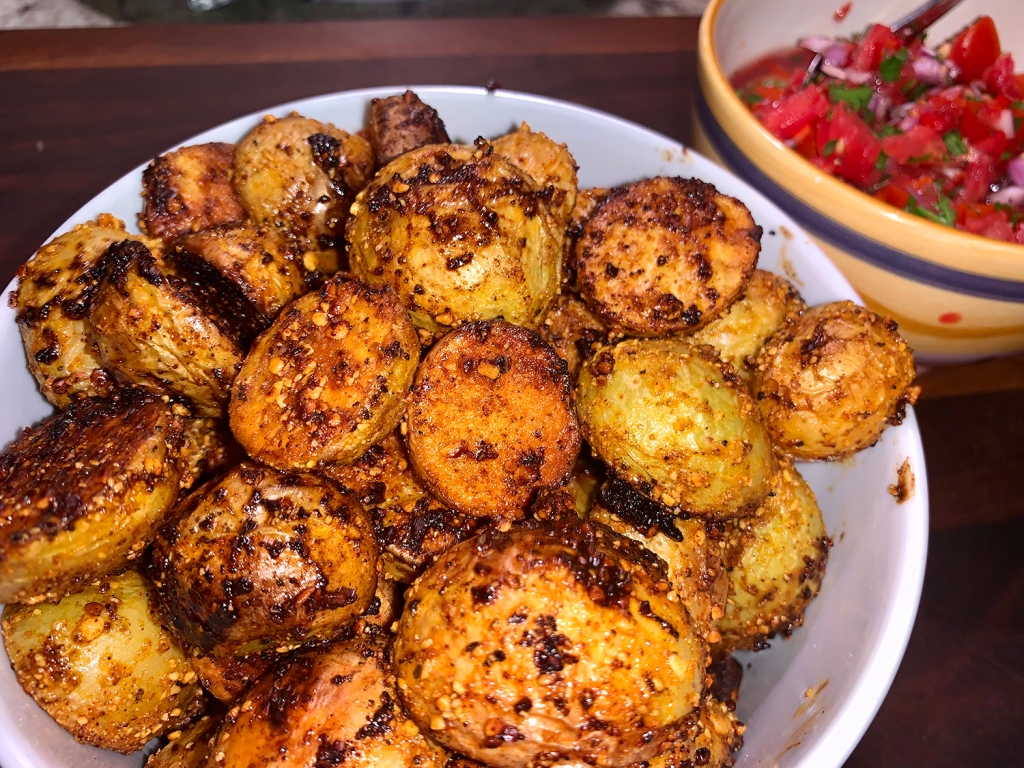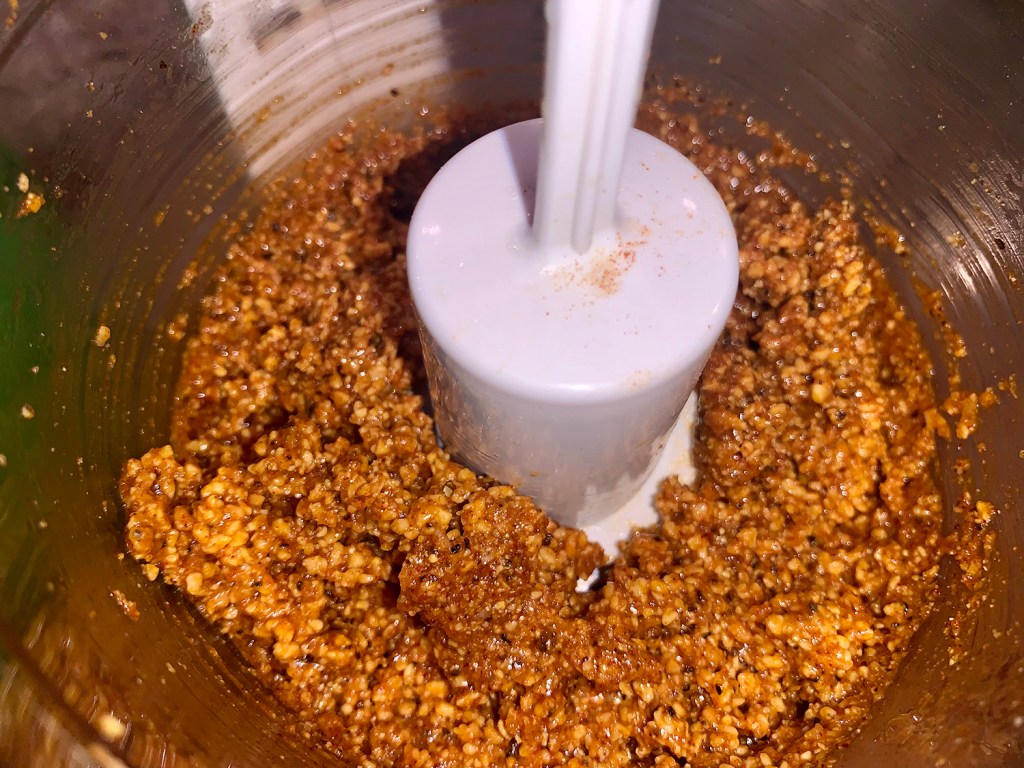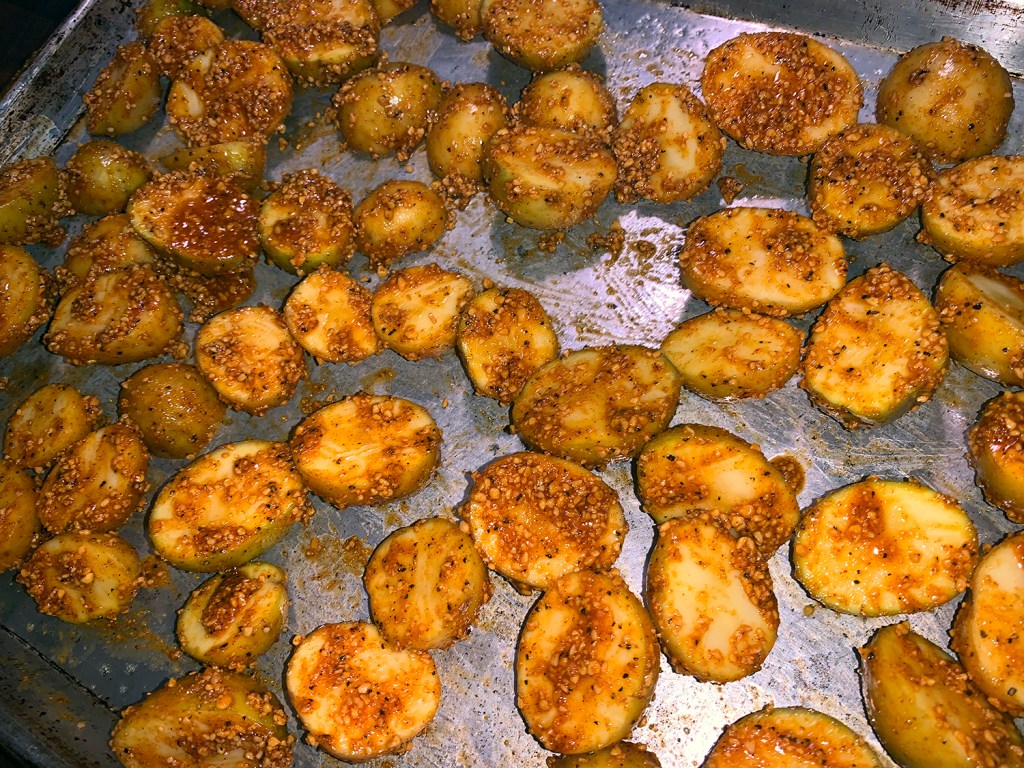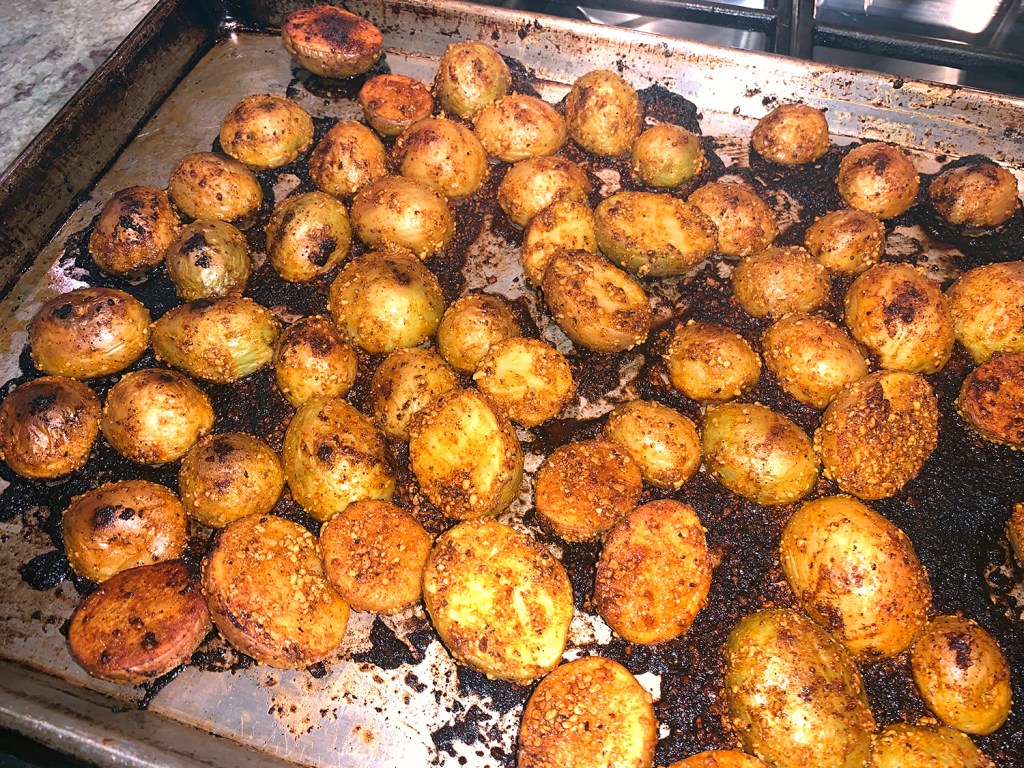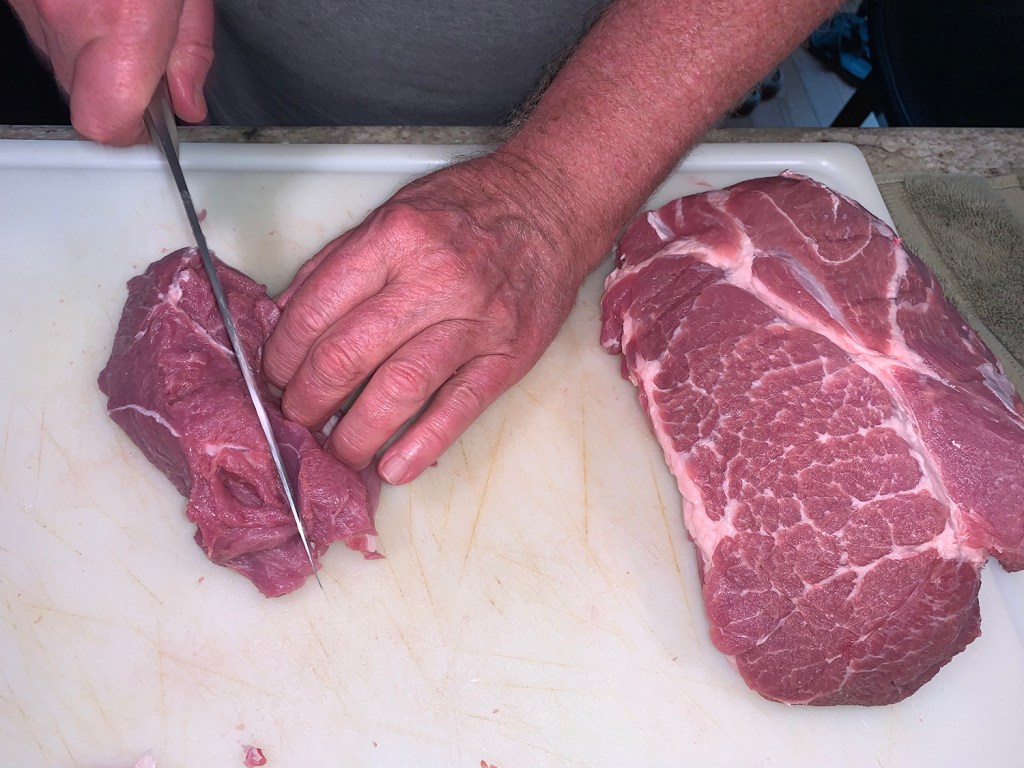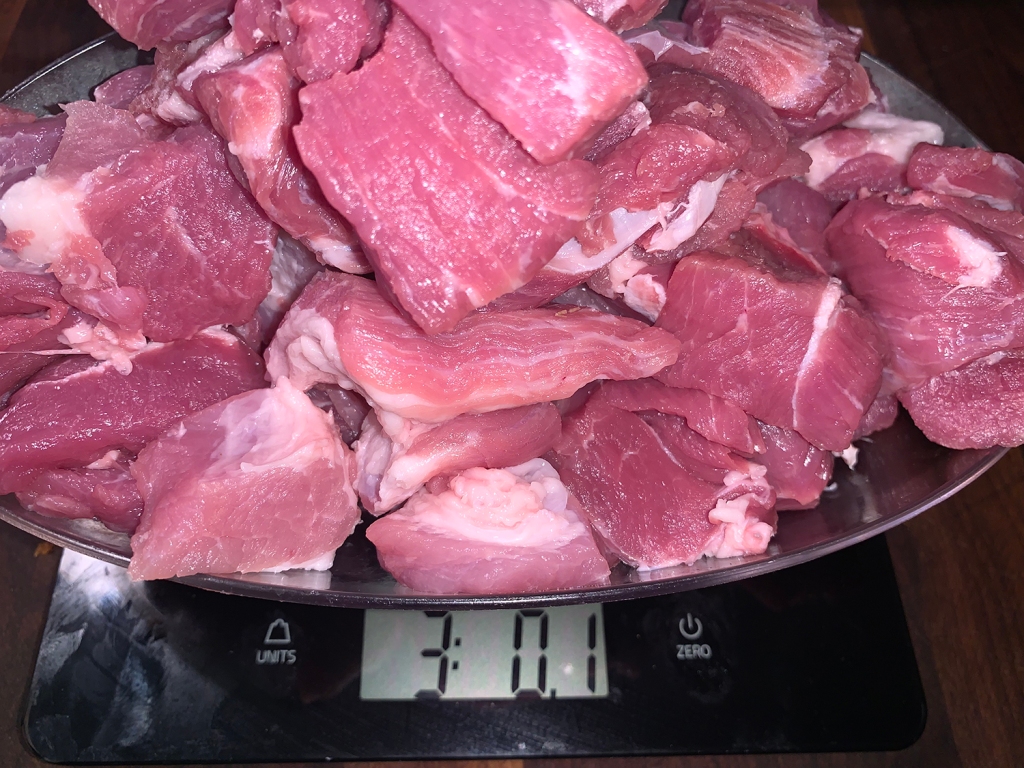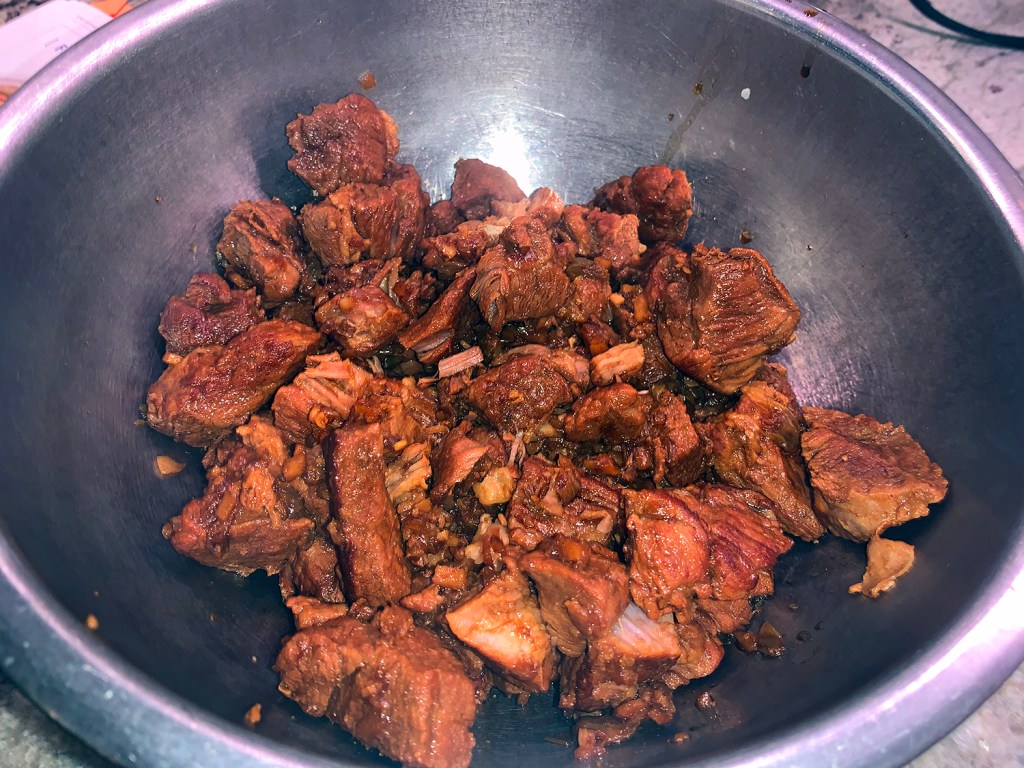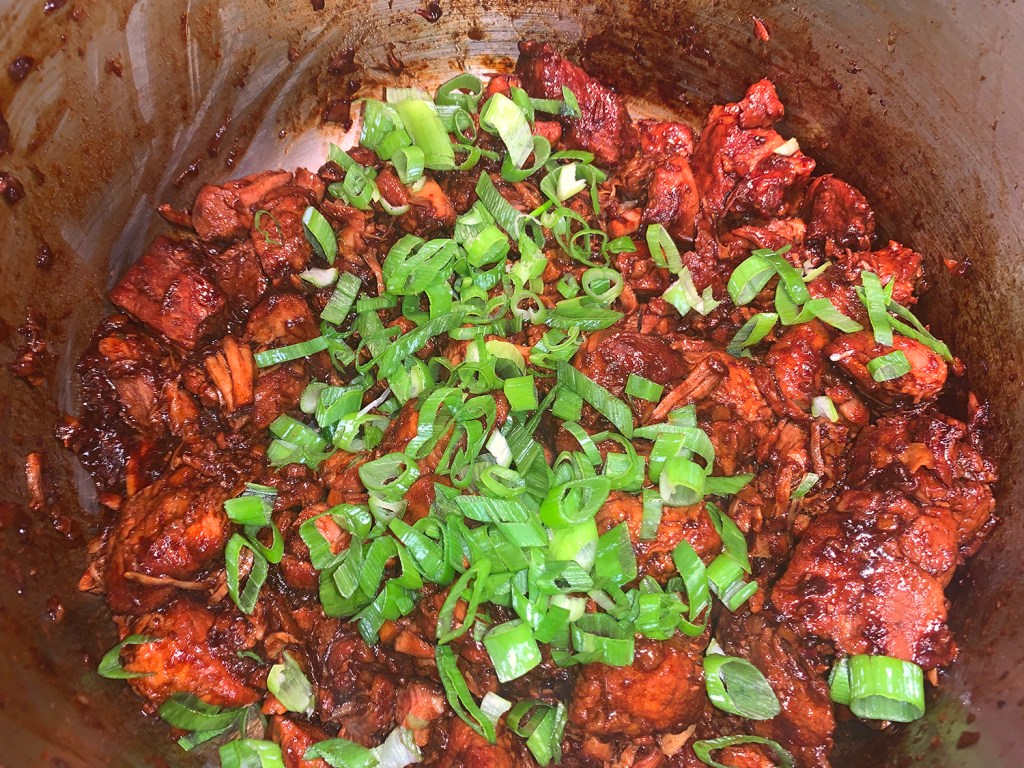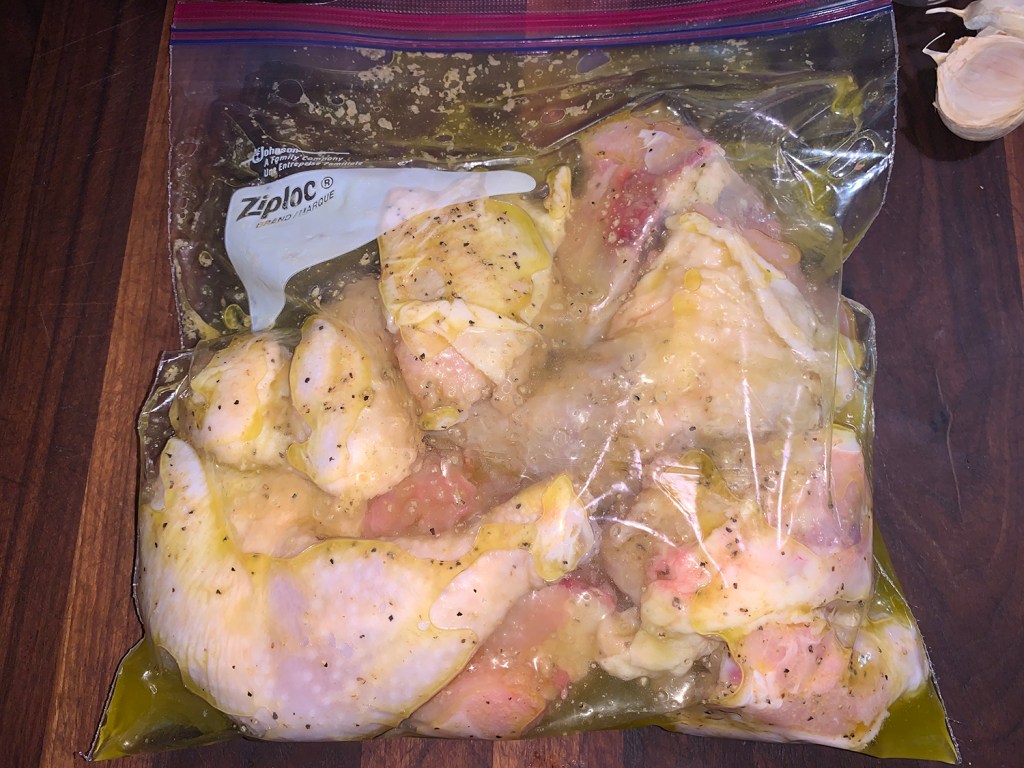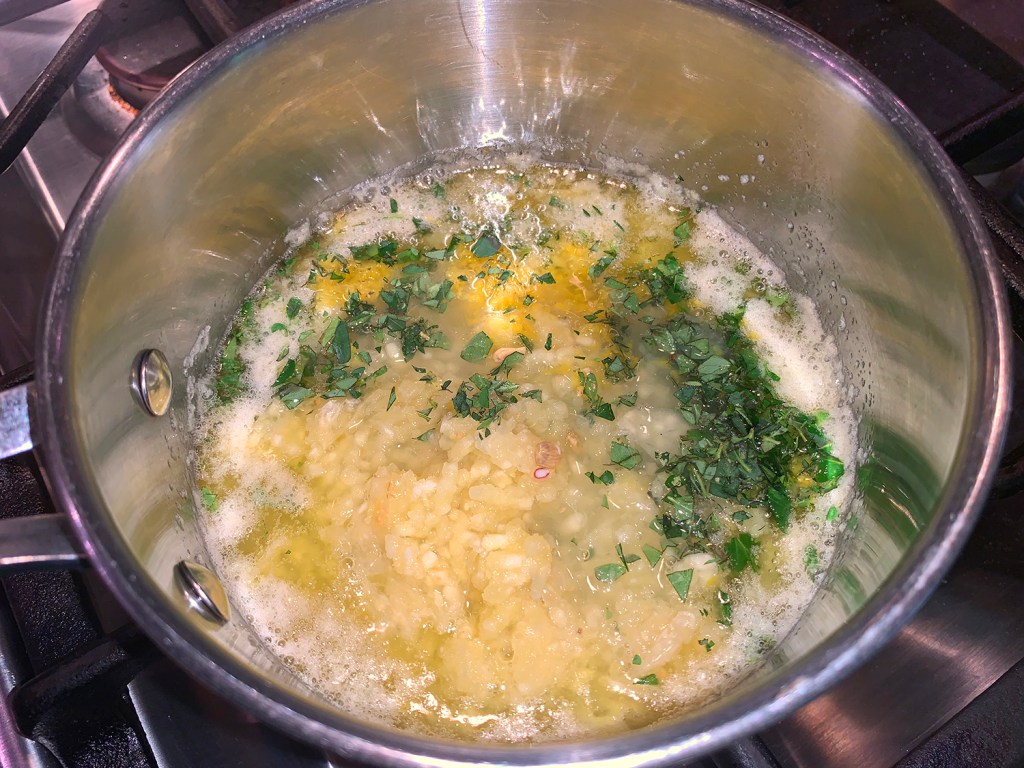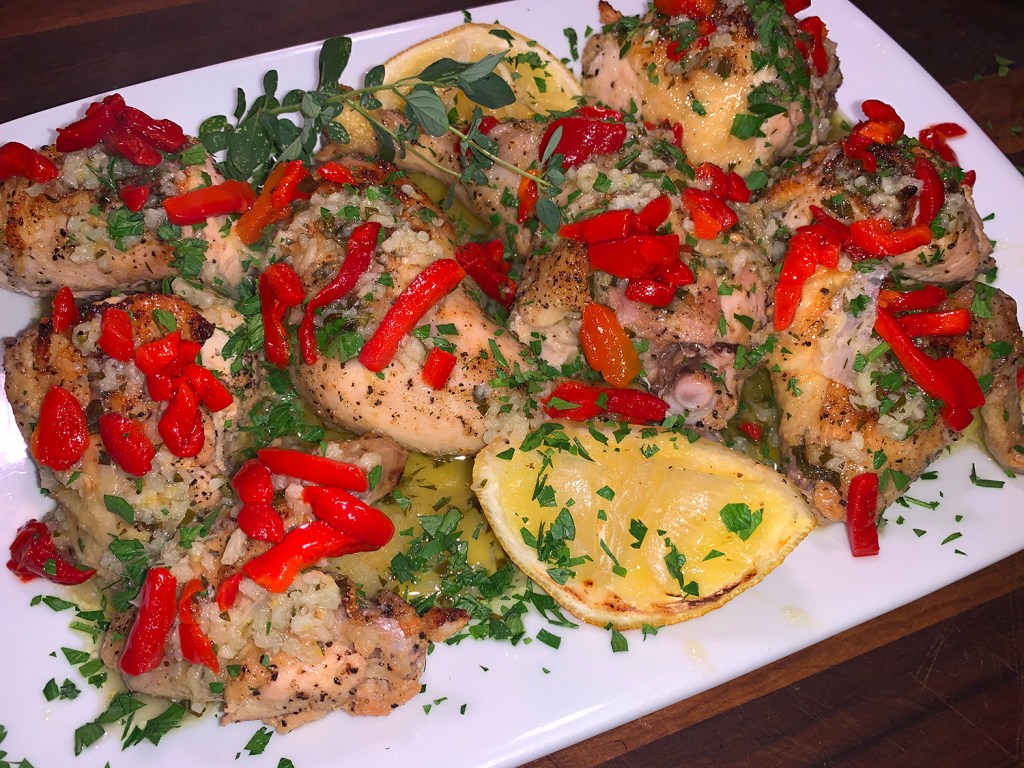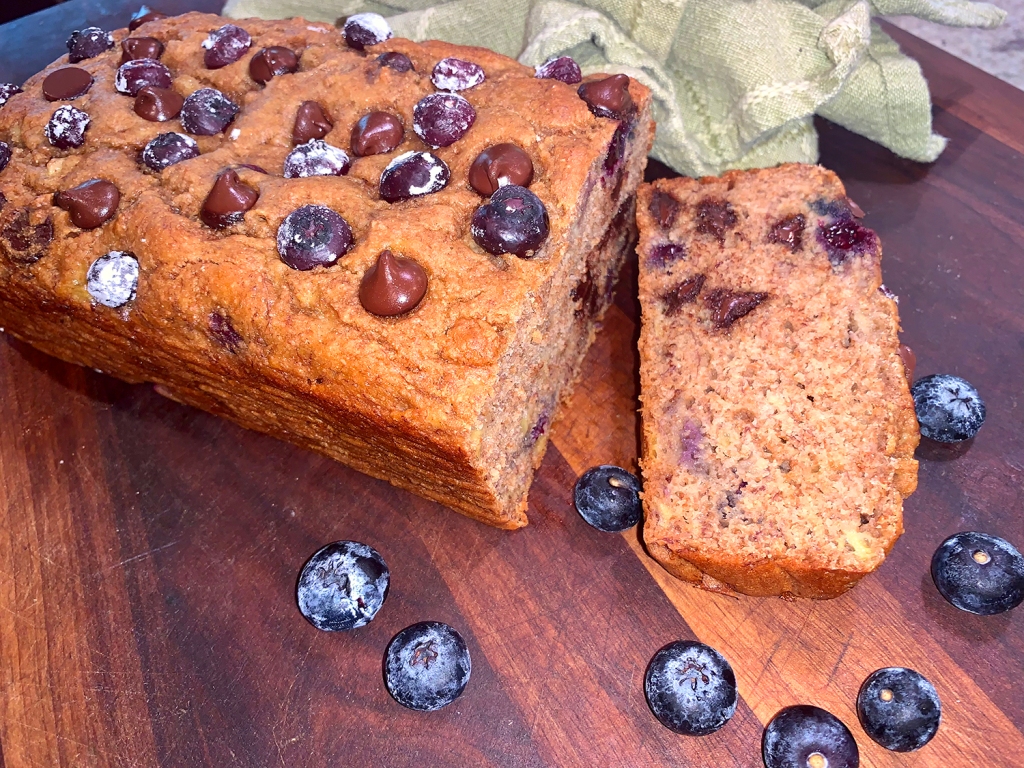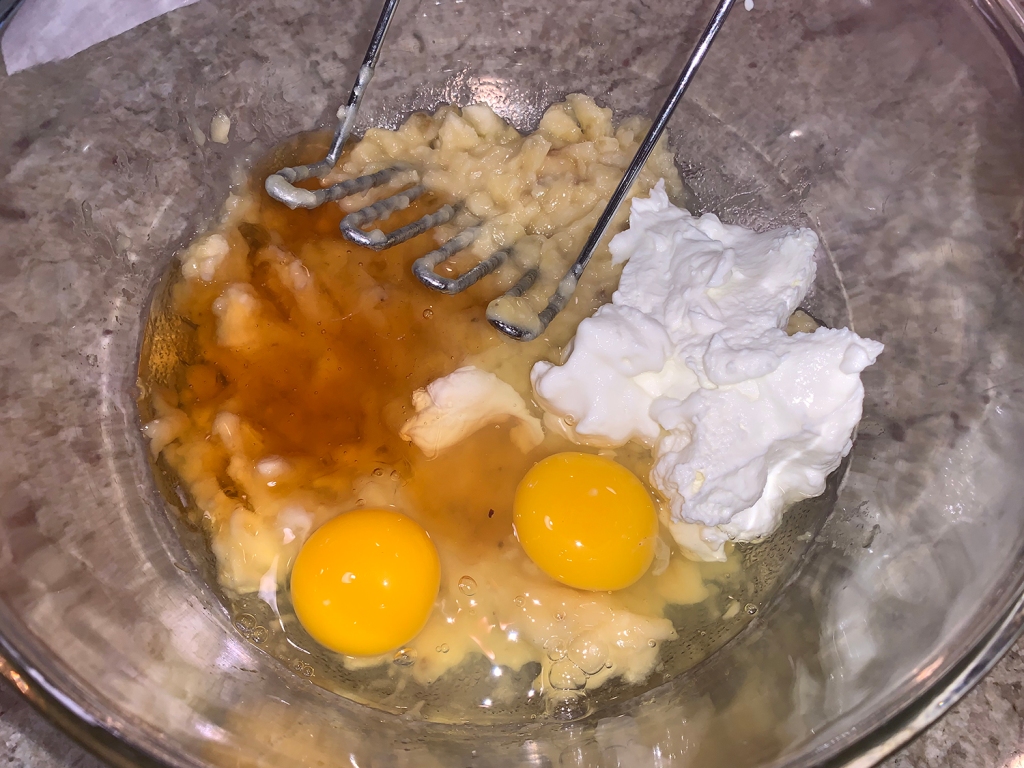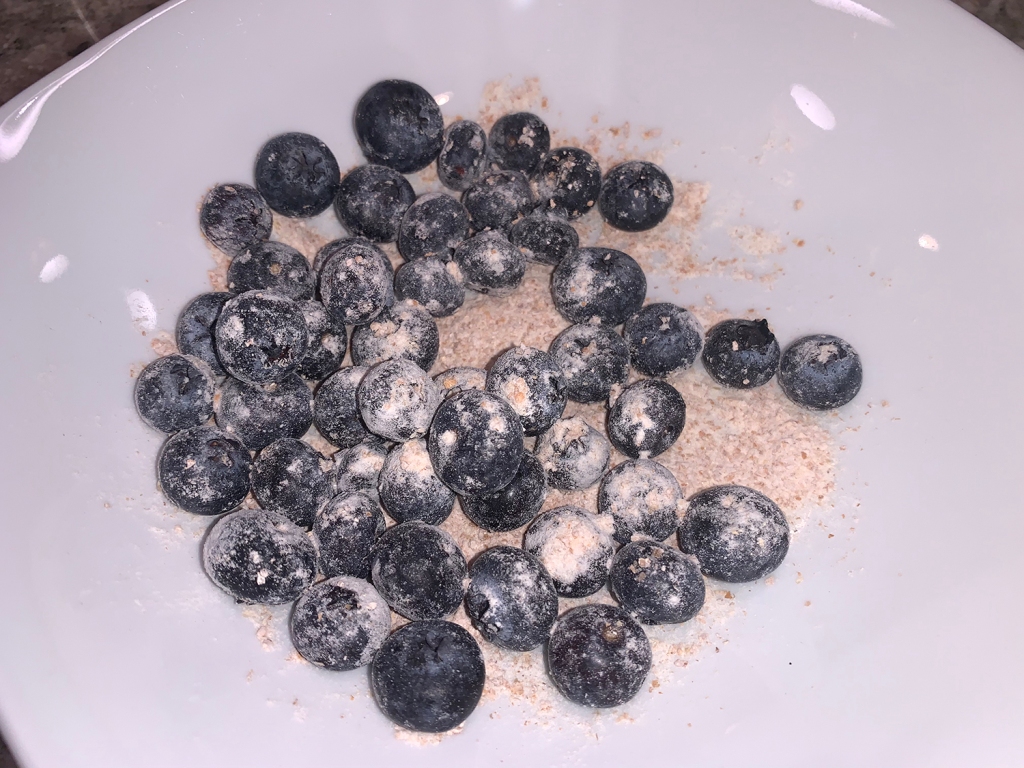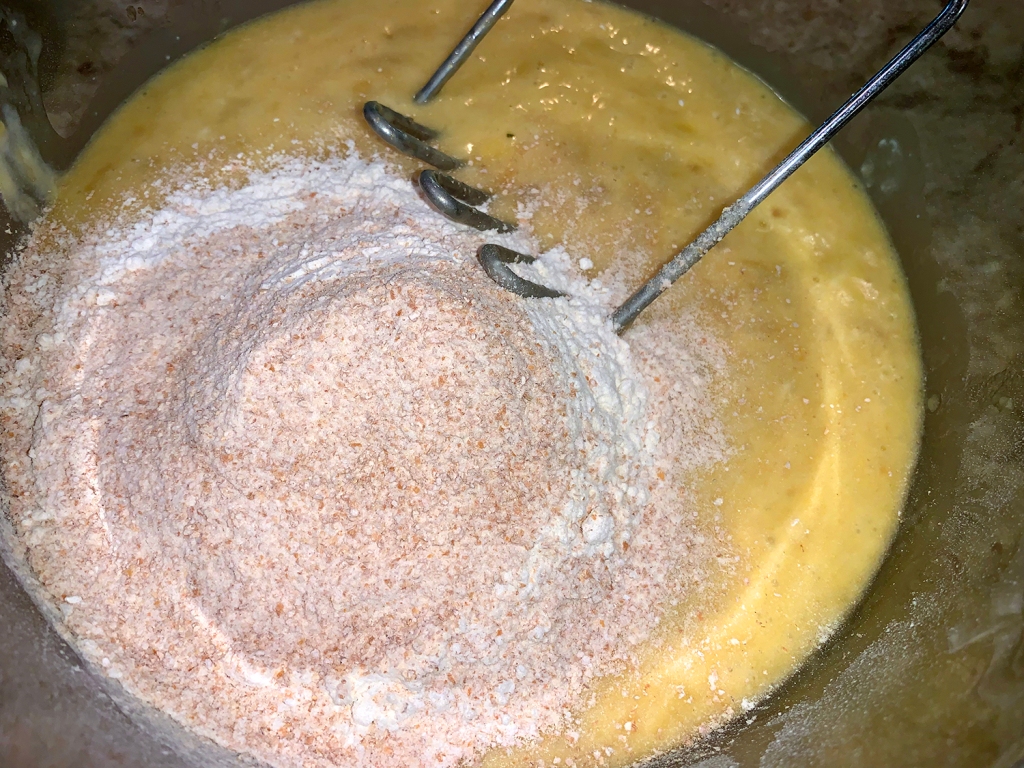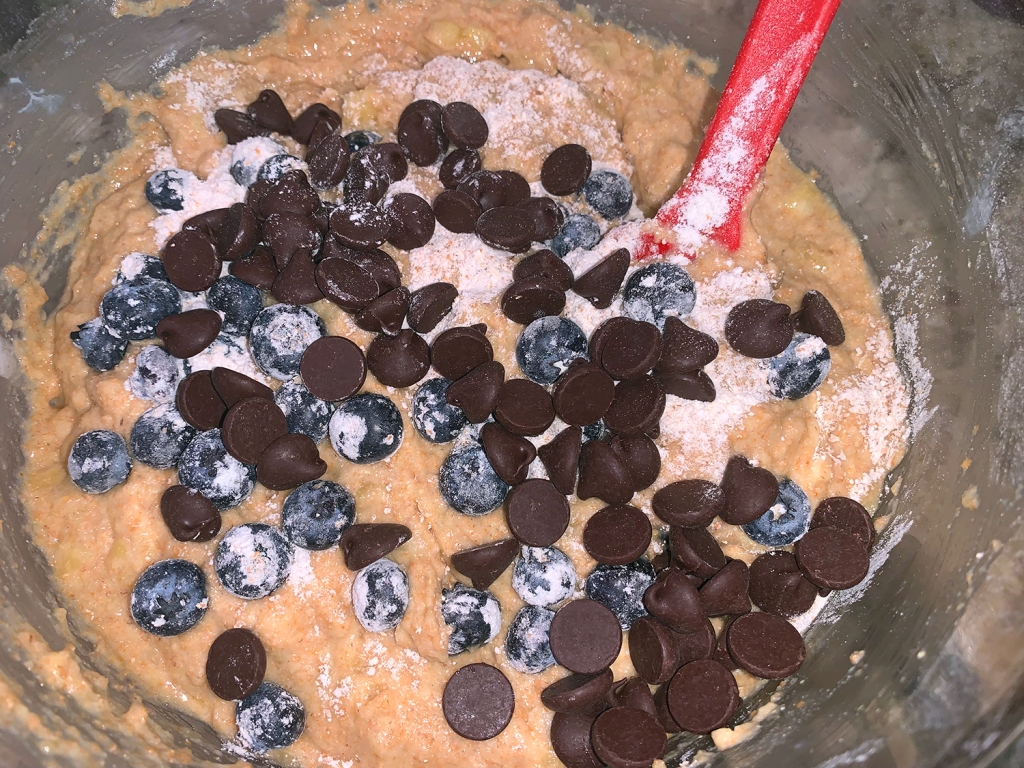This is an incredibly tasty Eggplant Parm dish that has been streamlined not only for the number of people it feeds, but in its simplicity and amount of time it takes from start to finish. Some of the time-consuming steps have been omitted, such as salting the eggplant slices to reduce bitterness and peeling the outer skin. We were both bowled over by how flavorful it was!
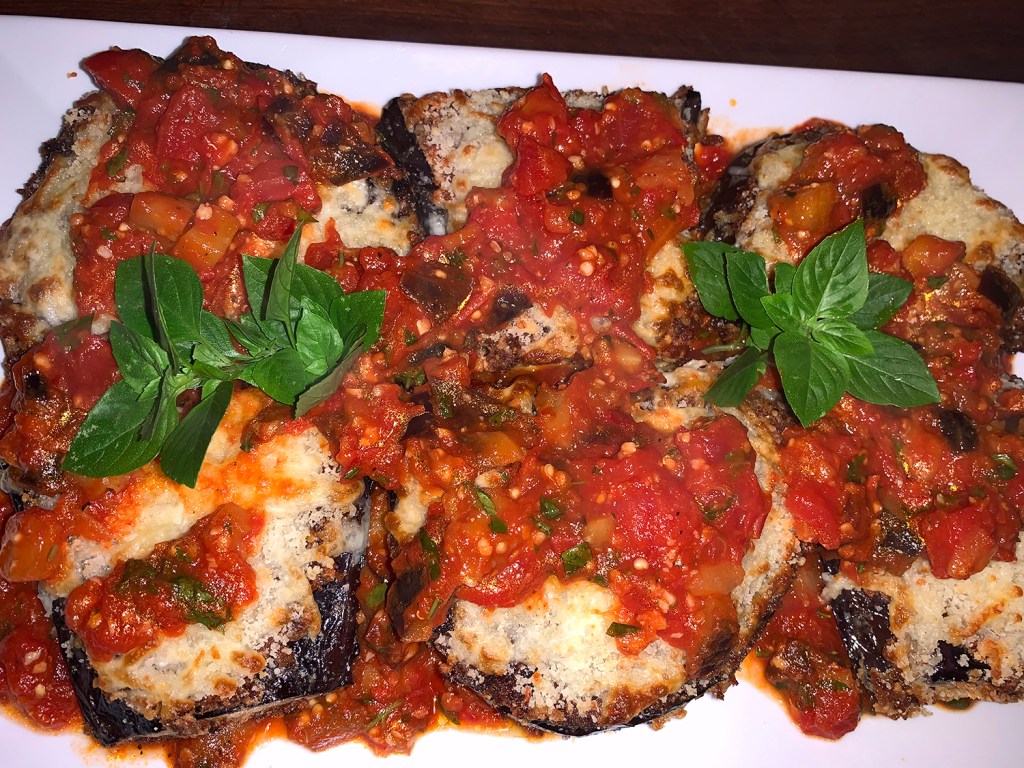
To be honest, our eggplant was about 1 1⁄2 pounds, so we slightly deviated the recipe to accommodate for the larger size. For instance, we were able to carve out three 3⁄4″ slices, which after cutting crosswise made 6 planks. To compensate, we needed another egg in Step 2, and used an extra can of tomatoes.
Some of our other changes included increasing the amount of cheese (because that’s the way we roll 🙂 ), adjusting some of the cooking times, and frying the planks in two separate batches, otherwise, we kept everything else pretty much the same. With our changes, the finished dish easily feeds 3 people.

Recipe Notes: 1. Using a sharp knife, slice off one side of eggplant (reserve) and cut two 3/4-inch planks from the center. 2. Cut planks in half crosswise so they’ll neatly fit into the pan for frying in a single batch. 3. Chop reserved side pieces into strips, then into ½-inch cubes and set aside for building the tomato pan sauce.
Easy Eggplant Parm for Two
Ingredients
- 1 1-lb. eggplant
- 1⁄4 cup all-purpose flour
- 1 large egg
- 1⁄2 cup panko breadcrumbs
- 3⁄4 cup grated parmesan cheese
- 1⁄4 salt
- 1⁄4 tsp. pepper
- 1⁄2 cup olive oil, plus 3 Tbsp. olive oil, divided
- 4 garlic cloves, minced
- 1⁄4 tsp. red pepper flakes
- 1 14 1⁄2 oz. can diced tomatoes
- 1⁄4 cup chopped fresh basil
- 1⁄2 cup shredded provolone cheese



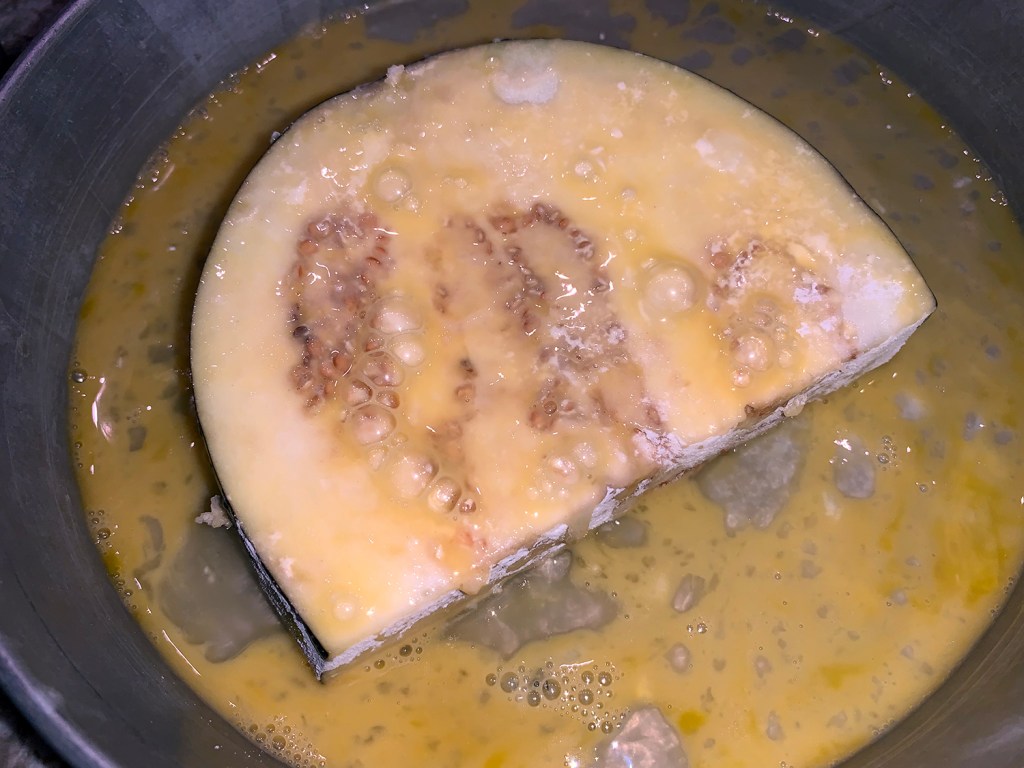


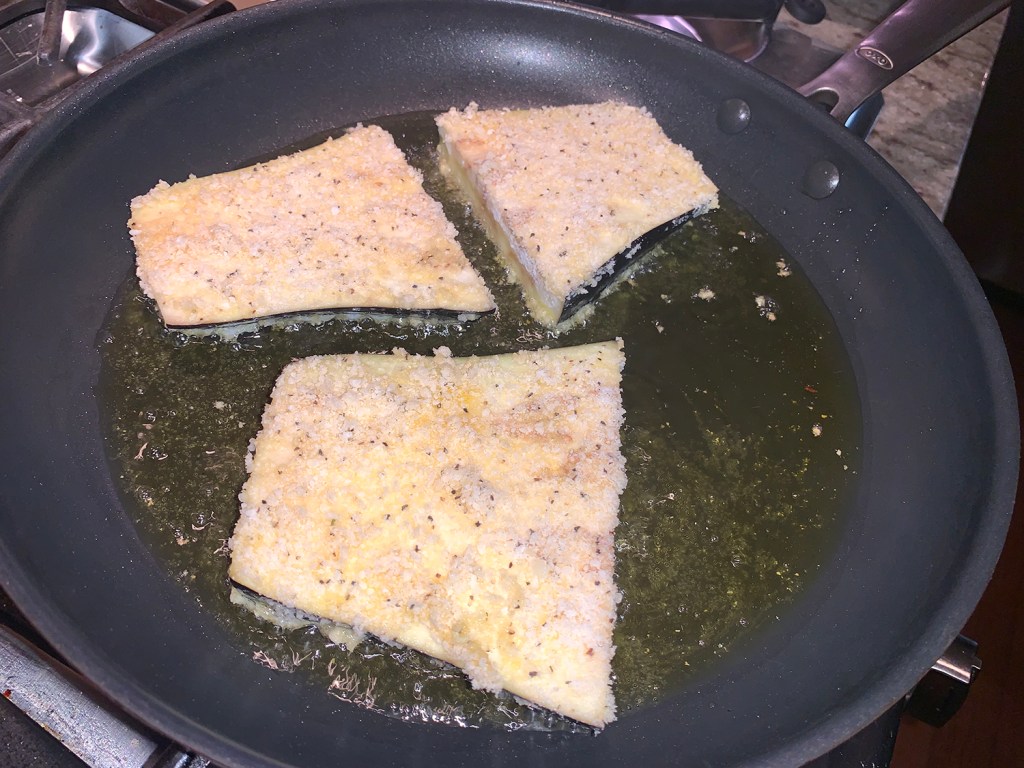


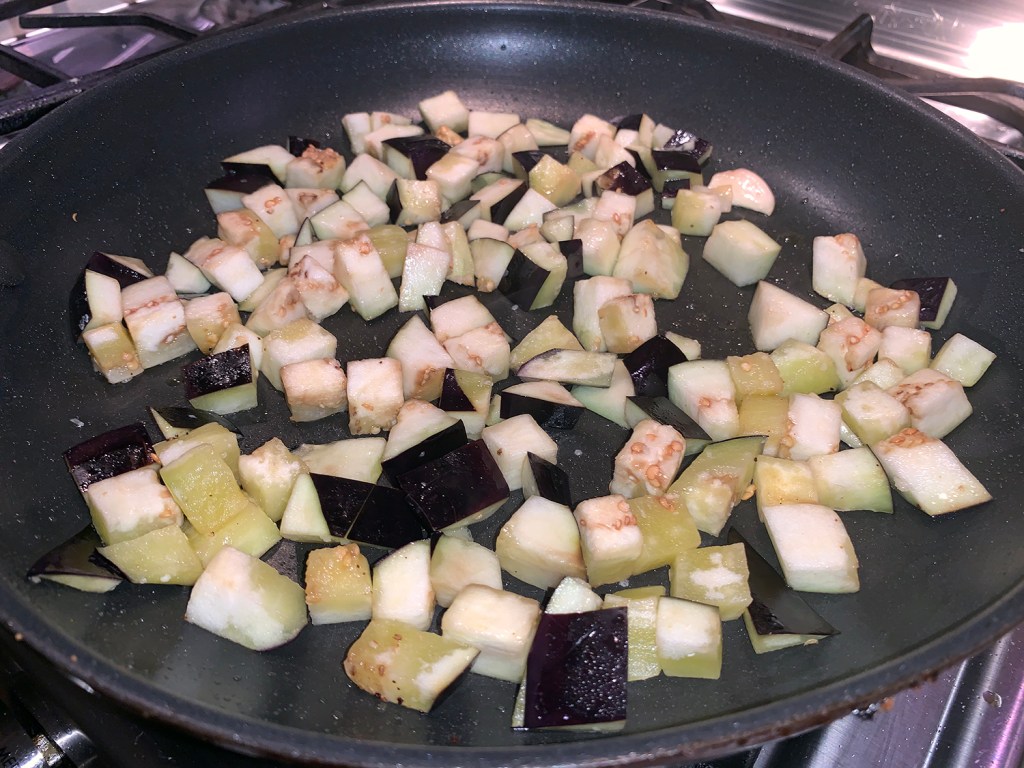




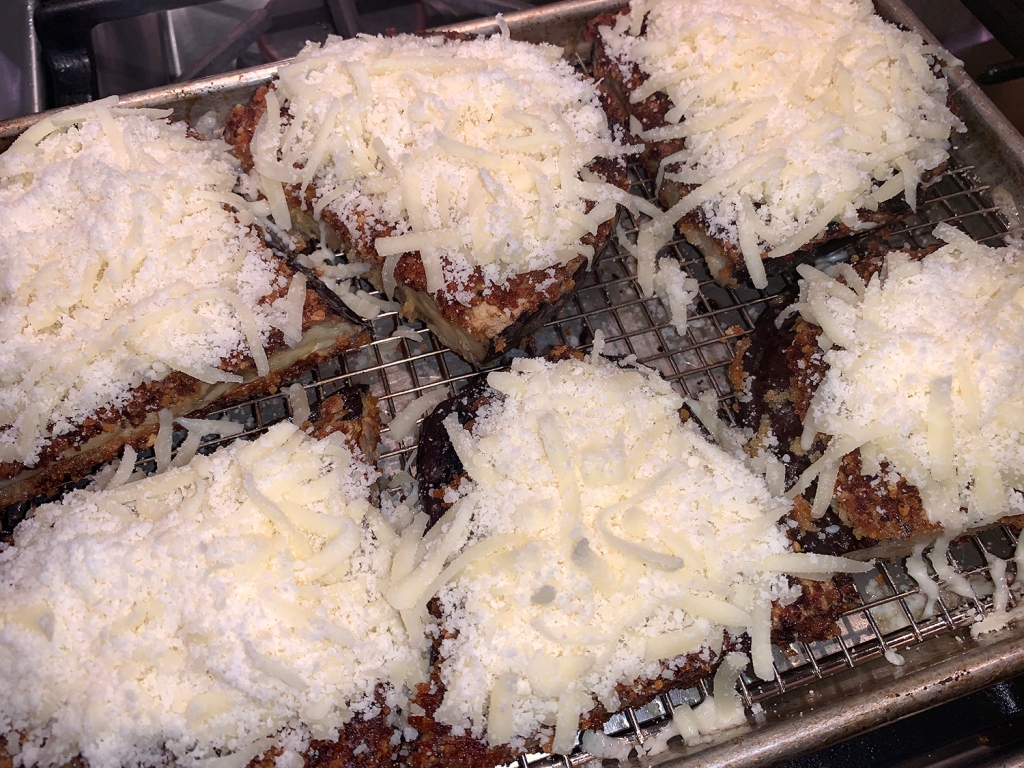

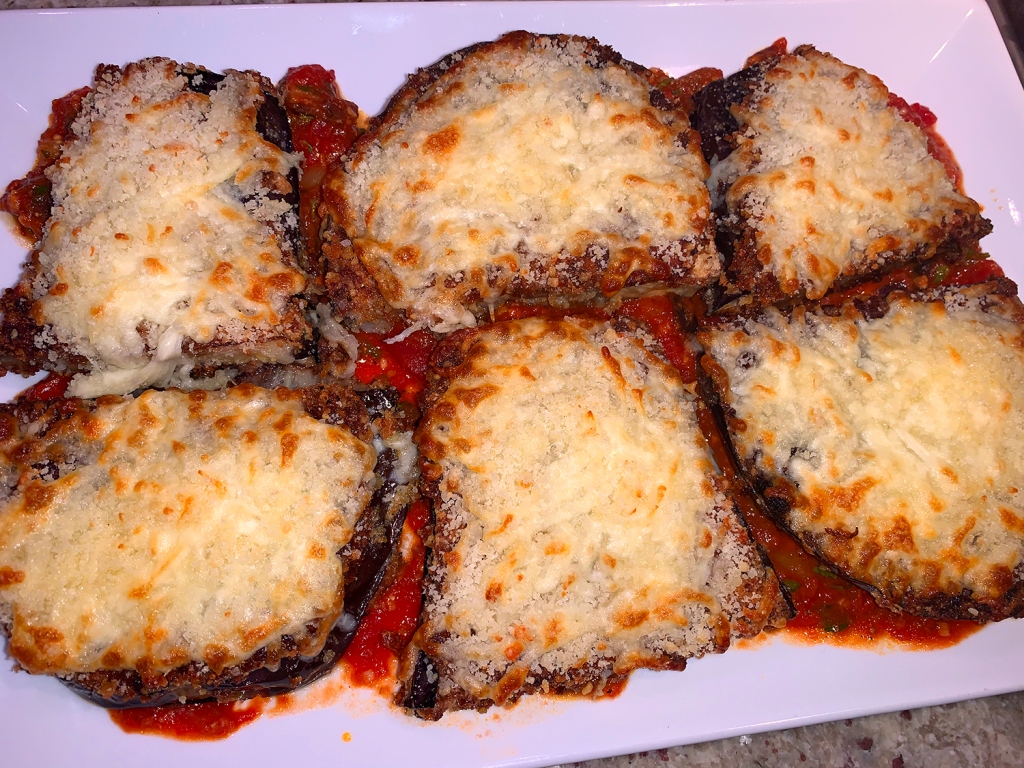

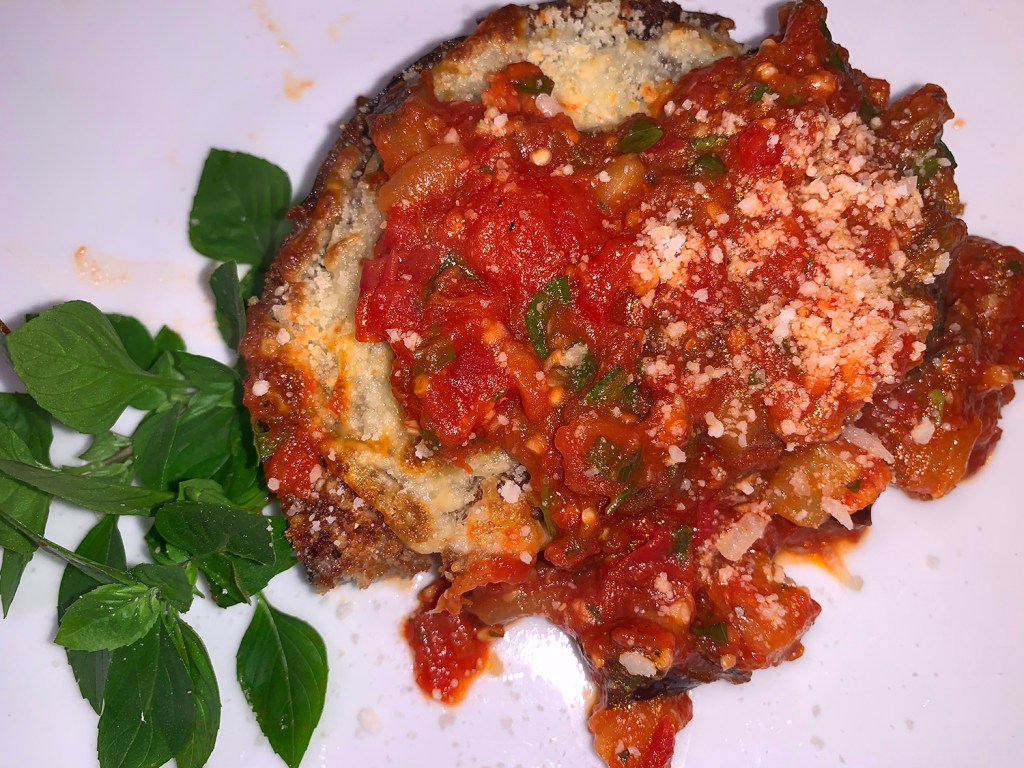
Directions
- Bread Eggplant: Cut two 3/4-inch planks lengthwise from center of eggplant, halve each plank crosswise. Cut remaining eggplant into 1/2-inch dice and set aside.
- Place flour in shallow dish. Beat egg in second shallow dish. Combine bread crumbs, 1/4-cup Parmesan, 1/4 teaspoon salt and 1/4 teaspoon pepper in third shallow dish. One at a time, coat eggplant slices lightly with flour, dip them in egg and dredge in bread crumb mixture, pressing to adhere.
- Transfer to wire rack set inside rimmed baking sheet and let sit 5 minutes (or refrigerate up to 1 hour).
- Cook Eggplant: Adjust oven rack to upper-middle position and heat oven to 450°F.
- Heat 1/2 cup oil in large nonstick skillet over medium-high heat until shimmering. Cook eggplant slices until lightly golden browned, about 1 minute per side.
- Transfer to wire rack set inside baking sheet and bake until eggplant is tender and deep golden brown, 15 to 18 minutes.
- Make Sauce: Meanwhile, pour off oil and wipe out skillet with paper towels. Heat 2 tablespoons oil in empty skillet over medium-high heat until shimmering.
- Add the reserved chopped eggplant and 1/4 teaspoon salt and cook, stirring occasionally, until lightly browned, about 3 minutes. Stir in remaining 1 tablespoon oil, garlic and pepper flakes and cook until fragrant, about 30 seconds.
- Add tomatoes and reduce heat to medium. Simmer until eggplant is tender and sauce is thickened, about 5 minutes. Stir in basil and season with salt and pepper; cover and keep warm.
- Assemble: Combine remaining 1/2 cup Parmesan and provolone in medium bowl. Top browned eggplant slices with cheese mixture and bake until cheese is melted, about 3 minutes (or longer if you increase the amount of cheese like we did).
- Transfer half of sauce to platter and top with eggplant slices. Spoon remaining sauce over eggplant. Serve.
Adapted from a recipe for Cook’s Country








